Welcome to the 2019 Reading Recap! A yearly roundup of the books I read this year.
If you have read some of my blog posts or have had a single conversation with me, you know I love reading books. I grew up reading books during school but moved away from the practice during college between 2012 and 2016. I encourage people to develop the habit of reading books.
In 2018, I ordered a bunch of books from Amazon. I didn’t read them. When 2019 rolled around, I decided to pursue reading books. This article recaps my journey in books I read in 2019.
I began tracking all the books I read on Goodreads. I set myself a challenge to read 100 books, ambitious. I started with small, thin books that lasted about 100 pages to ease myself into it. I discovered I enjoyed audiobooks, so I read most of the books in audio form.
I read a total of 26813 pages across 105 books, including a couple of books that were audio-only. That comes out to 260 pages a book and almost 74 pages daily. Not bad for a start!
I wanted to write a recap of the books I read. I was inspired to write this list after reading the yearly roundup that Mark Manson does on his website. I simply love his articles, his format, and his recommendations. However, I don’t have a Top 10 favorites list, but I will make a special mention about the books I recommend you check out. Let’s get started.
Who Moved My Cheese by Spencer Johnson
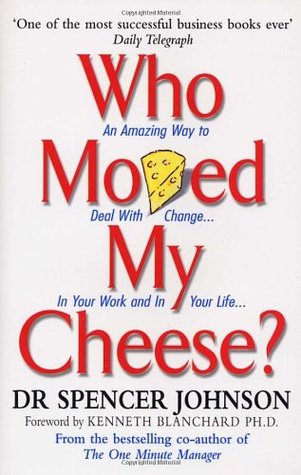
“Who Moved My Cheese?” is a short but powerful motivational book by Spencer Johnson. The book is a fable and tells the story of four characters who live in a maze and search for the cheese to make them happy. The characters are two mice, Sniff and Scurry, and two little people, Hem and Haw. The mice represent our basic instincts, and the little people represent our higher thinking.
The book uses the characters’ experiences to teach readers how to deal with change and adapt to difficult situations. It emphasizes the importance of being flexible, open-minded, and willing to take risks to succeed in life. The characters’ journey through the maze is a metaphor for our own journey through life, and the cheese they search for represents the things that make us happy and fulfilled.
The book is simple and easy to read, but it is full of wisdom and practical advice for anyone facing a difficult situation or struggling to adapt to change. It teaches us that change is inevitable and that we must be prepared to deal with it. It also teaches us that we can choose how we respond to change and that our attitude and mindset can make all the difference.
You can read this book in one sitting. I chose to start with this book because of its small size. I had stopped reading books and wanted to build a habit so I decided to start small.
Overall, “Who Moved My Cheese?” is a timeless classic that has helped millions of people worldwide adapt to change and succeed in life. It is a must-read for anyone looking for inspiration, guidance, and practical advice on navigating life’s challenges.
The Art of War by Sun Tzu
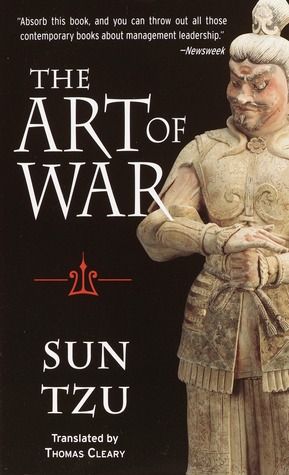
“The Art of War” is a highly acclaimed and influential strategic military treatise written by Sun Tzu, a renowned general, strategist, and philosopher from ancient China. The book comprises 13 chapters, each focusing on a different aspect of warfare, such as planning, tactics, and leadership.
One of the key teachings of the book is the importance of flexibility in warfare. Sun Tzu emphasizes the need for commanders to be adaptable and to adjust their strategies to respond to changing circumstances on the battlefield. He also stresses the importance of deception in warfare, advising commanders to use their enemy’s expectations and perceptions against them to gain an advantage.
Another crucial aspect of the book is that understanding one’s enemy is essential to achieving victory. Sun Tzu argues that a commander who knows their enemy’s strengths and weaknesses and their own will be better equipped to make strategic decisions that lead to success. He also advises against underestimating one’s enemy, warning that arrogance and complacency can be fatal in battle.
While “The Art of War” is primarily known for its military applications, it has also been widely studied for its insights into human nature and the nature of conflict. The book highlights the importance of discipline, courage, and leadership and provides valuable lessons for anyone seeking to navigate challenging situations or succeed in any endeavor.
Overall, “The Art of War” is a timeless and highly influential work that has inspired generations of military leaders, strategists, and thinkers. Its teachings continue to be relevant and applicable in today’s world, making it a must-read for anyone interested in strategy, leadership, or the human condition.
The Alchemist by Paulo Coelho

“The Alchemist” is a novel by Paulo Coelho that tells the story of Santiago, a shepherd boy who dreams of discovering a treasure hidden in the Egyptian pyramids. After a series of prophetic dreams, Santiago embarks on a journey to fulfill his destiny and find his treasure.
Along the way, Santiago meets many people who help him on his journey, including a mysterious alchemist who teaches him about the power of the universe and how to follow his heart. Santiago also learns important lessons about love, faith, and the meaning of life.
The novel is written in a poetic and allegorical style, rich with symbolism and metaphor. It explores themes of personal growth, self-discovery, and the pursuit of one’s dreams. The story is both inspiring and thought-provoking, and it challenges readers to reflect on their own lives and the paths they choose to take.
I found this book on almost every reading recommendation list I ever encountered. There is plenty to read between the lines. I highly recommend the book and it’s one of the books I re-read occasionally.
Crush It!: Why Now Is the Time to Cash in on Your Passion by Gary Vaynerchuk

“Crush It!” is a book by Gary Vaynerchuk that focuses on building a personal brand and leveraging social media platforms to create a successful career. The book has three parts: personal brand, social media platforms, and strategy.
In the first part, Vaynerchuk emphasizes the importance of finding one’s passion and using it as the foundation for building a personal brand. He encourages readers to focus on their strengths, be authentic, and create a niche for themselves.
In the second part, Vaynerchuk discusses the various social media platforms available and the ways in which they can be used to promote a personal brand. He provides tips and strategies for using each platform effectively, including Facebook, Twitter, Instagram, and LinkedIn.
In the final part, Vaynerchuk offers advice on developing a strategy for building and promoting a personal brand. He stresses the importance of consistency, hard work, and patience in building a successful career.
Throughout the book, Vaynerchuk provides examples and success stories of individuals who have used his principles to build successful personal brands. He also emphasizes the need to constantly adapt and evolve one’s strategy in response to changes in the marketplace.
The exciting thing about reading this book in 2019 was that many platforms he talks about don’t exist anymore or did not become popular such as Viddler, Vine, and Vero, to name a few. What caught my attention was that his business philosophy hasn’t changed at its core. He still talks about empathy and self-awareness. There are so many gems in this book that I need to write separate articles to dissect what I read—a must-read for all marketers and entrepreneurs.
How to Talk to Anyone: 92 Little Tricks for Big Success in Relationships by Leil Lowndes

“How to Talk to Anyone” is a self-help book written by Leil Lowndes that aims to help readers improve their communication skills and become more confident in social situations. The book is divided into nine parts, each focusing on a different aspect of communication.
Part 1 focuses on the importance of body language and nonverbal communication. Lowndes explains how to use body language to convey confidence and build rapport with others.
Part 2 discusses the importance of making a good first impression. Lowndes provides tips for starting conversations, making introductions, and remembering people’s names.
Part 3 covers the art of small talk. Lowndes explains how to make the small talk interesting and engaging and provides tips for finding common ground with others.
Part 4 focuses on conversation techniques that can be used to build relationships and connect with others. Lowndes provides tips for active listening, asking questions, and sharing personal stories.
Part 5 discusses the importance of humor in communication. Lowndes provides tips for using humor appropriately and effectively in social situations.
Part 6 focuses on communication in romantic relationships. Lowndes provides tips for flirting, building sexual tension, and maintaining a healthy relationship.
Part 7 covers the importance of communication in business and professional settings. Lowndes provides tips for networking, making a good impression in job interviews, and negotiating effectively.
Part 8 discusses handling difficult communication situations, such as dealing with criticism or conflict. Lowndes provides tips for remaining calm and assertive in these situations.
Finally, part 9 focuses on the importance of self-confidence and self-esteem in communication. Lowndes provides tips for building self-confidence and overcoming social anxiety.
This author presents the book as a modern-day, 21st-century version of the classic Dale Carnegie book “How to Win Friends and Influence People.” I went through every chapter and implemented all the tactics one by one with varying degrees of success. I immediately noticed changes in how I carried myself and how people responded. I want to write a dedicated article summarizing the tricks and my experience using them.
It was insightful and instructive for someone like me, who struggled in social situations and had to learn to speak confidently. Each trick in the book has a detailed explanation, example, and memorable name. The key to reading this book is to read it slowly instead of cover. It is one of those books whose information is valuable if applied and practiced regularly.
Fish! by Stephen C. Lundin, Harry Paul & John Christensen
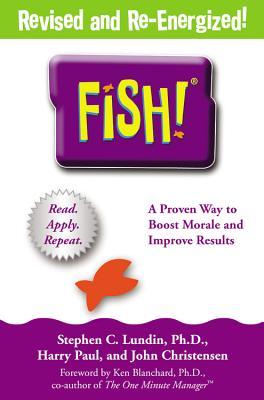
“Fish!” is a business book written by Stephen C. Lundin, Harry Paul, and John Christensen that uses the example of Seattle’s Pike Place Fish Market to illustrate how positive attitudes and a focus on customer service can lead to success in any business. The book is divided into four parts.
In Part 1, the authors introduce the reader to Pike Place Fish Market and the four fishmongers who work there. The authors describe how the fishmongers turn their work into a fun and energetic experience, engaging with customers and throwing fish across the market to one another. The authors use the fish market as a metaphor for any business, arguing that any job can be made more enjoyable by infusing it with passion and energy.
In Part 2, the authors explain the importance of choosing one’s attitude, and how it can affect one’s work and interactions with others. They offer practical tips for developing a positive attitude, including focusing on what’s going right, finding the fun in one’s work, and taking responsibility for one’s own happiness.
In Part 3, the authors discuss the importance of being present and engaged in one’s work. They explain how this can help create a sense of purpose and fulfillment in one’s job, and offer tips for staying focused and engaged.
In Part 4, the authors explain how to create a positive work environment by focusing on teamwork and customer service. They offer tips for building strong relationships with colleagues and customers and explain how this can lead to success and growth for any business.
Throughout the book, the authors use anecdotes and examples from the Pike Place Fish Market to illustrate their points. They offer practical advice and encouragement for readers to take control of their own attitudes and actions in the workplace and to create a more positive and fulfilling work environment.
Crushing It by Gary Vaynerchuk
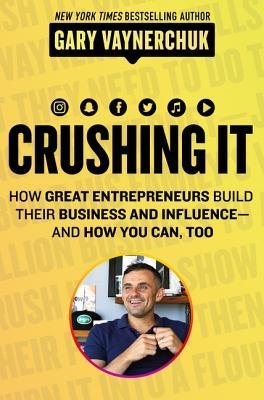
“Crushing It!” by Gary Vaynerchuk is a follow-up to his earlier book, “Crush It!”, and focuses on how individuals can leverage social media platforms to build a personal brand, grow their business, and achieve success in the digital age.
The book is divided into two main sections: the first section provides a comprehensive overview of the current social media landscape, highlighting the key trends and platforms that are driving the industry. The second section is a collection of real-life case studies, featuring individuals who have successfully used social media to build their personal brand and grow their business.
In the first section of the book, Vaynerchuk stresses the importance of understanding the various social media platforms, and tailoring your content to suit each platform’s unique audience and features. He also emphasizes the need for authenticity, transparency, and consistency in your online presence, as these factors are key to building trust and credibility with your audience.
The second section of the book features a diverse range of case studies, from entrepreneurs and small business owners to musicians, writers, and even a professional gamer. Each case study provides insight into how the individual used social media to build their personal brand, connect with their audience, and ultimately achieve their goals.
Throughout the book, Vaynerchuk emphasizes the importance of hard work, persistence, and passion in building a successful personal brand. He also stresses the need to be flexible and adaptable, as the social media landscape is constantly evolving and changing.
Eight years after Crush It, GaryVee talks about how social media has evolved and its impact on the evolution of business. He talks about the success of his last book and presents case studies and real-life examples of people who created successful companies after reading Crush It. He shares his thoughts on the various social media platforms and how his predictions panned out. He talks about his business philosophy and things he turned out to be wrong.
I had been following GaryVee’s content on social media for close to a year when I read this book. Much of what he says in his content and the book is the same, but if you read it purely as a book by a businessman, it feels like you found a coach and mentor. I enjoyed reading about the examples of other entrepreneurs who attributed their success to Crush It. I followed every single one on social media and learned many exciting things. Again, I will do a separate article for the advice I found in the book. A must-read, this book will be on my bookshelf for a long time.
Way of the Wolf by Jordan Belfort

“The Way of the Wolf” by Jordan Belfort is a guidebook on how to become a master salesman and close deals effectively. Belfort draws from his extensive experience as a successful stockbroker and founder of Stratton Oakmont, a brokerage firm that made him famous and infamous in the 1990s.
The book is divided into two main sections: “Straight Line Persuasion” and “The Art of Prospecting.” In the first section, Belfort introduces his Straight Line Persuasion System, which is based on the idea that successful sales require a clear and direct path from the opening pitch to the close. The system involves three main components: the opening, the body, and the close. Belfort provides detailed explanations and examples of how to use each component effectively, along with tips on handling objections and building rapport with prospects.
In the second section, Belfort focuses on the importance of effective prospecting, or finding and identifying potential customers. He provides a comprehensive guide to prospecting, covering topics such as targeting the right audience, building a prospect list, and using various methods to generate leads.
Throughout the book, Belfort emphasizes the importance of having a positive mindset, taking action, and maintaining high energy levels. He also stresses the need for ethical sales practices, and encourages readers to focus on building long-term relationships with customers rather than just making a quick sale.
In addition to his sales techniques, Belfort also shares personal stories and anecdotes from his own experiences, including his rise to success and his eventual downfall due to unethical behavior. He uses these stories to illustrate the importance of self-awareness, self-control, and accountability in both business and personal life.
Learning about the concepts described in this book has helped me become more persuasive and had a major impact on how I communicate with people. The guy is a killer salesman and knows how to teach as well. He has condensed his three-day seminar into this power-packed book which is a must-read for anyone who wants to go into sales.
The Game by Neil Strauss
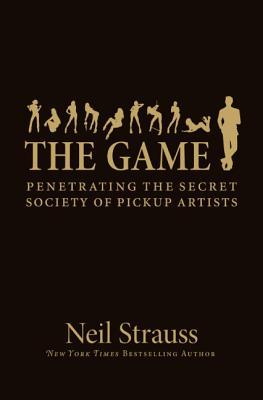
“The Game: Penetrating the Secret Society of Pickup Artists” by Neil Strauss is a memoir that chronicles the author’s journey into the world of pickup artists and his attempts to become a successful “seducer” himself. The book is divided into two main parts: the first half explores Strauss’s personal experiences as a pickup artist, while the second half focuses on the techniques and strategies used by pickup artists to attract and seduce women.
In the first part of the book, Strauss describes how he was introduced to the world of pickup artists and his initial attempts to learn the art of seduction. He provides a detailed account of the tactics and techniques he used to attract women, including “negging” (giving a backhanded compliment), “peacocking” (dressing in flashy or unusual clothing to stand out), and “kino escalation” (gradually increasing physical touch).
The second part of the book is more instructional, with Strauss breaking down the various tactics and strategies used by pickup artists into specific steps and principles. He discusses the importance of body language, confidence, and social proof in attracting women, as well as the need to create emotional connections and use storytelling to build attraction.
Throughout the book, Strauss explores the psychology behind attraction and seduction, delving into topics such as evolutionary biology, social conditioning, and gender roles. He also addresses the ethical implications of pickup artistry, acknowledging that some of the techniques used by pickup artists can be manipulative or harmful to women.
Overall, “The Game” is a fascinating and controversial exploration of the world of pickup artists and the strategies they use to attract and seduce women. While some readers may find the book disturbing or offensive, it offers a unique perspective on the psychology of attraction and the dynamics of social interaction.
Neil Strauss is a master at writing memoirs, and his adventures keep the reader hooked. This book gained immense popularity because of its subject matter. For many who seek to understand what PUAs call social dynamics, it is the starting point of their journey. Indeed when I told people I was reading this book, people gave me a coy smile asking me if I was trying to learn how to pick up women.
I found this book to be a gripping story. I see it more as an autobiography than a self-help book. The author shares his experiences of how the PUA community changed his life. We get a glimpse of the glamorous lifestyle and the eventual consequences. The ending can catch the reader off-guard, but it does seem fitting. I don’t know if I would come back for a second time, but it was worth reading once.
Making the Shift by Darren Hardy
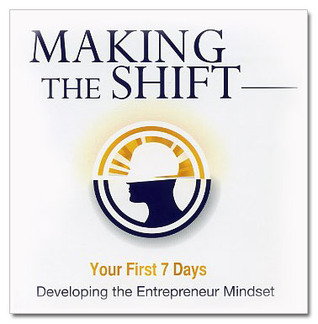
“Make the Shift” by Darren Hardy is a self-help book that aims to help readers make significant changes in their lives by identifying and shifting their mindset. The book is divided into three main parts: “The Invitation,” “The Shift,” and “The Transformation.”
In the first part of the book, Hardy invites readers to join him on a journey of personal transformation. He explains that the key to making a lasting change is to shift our mindset from one of scarcity to one of abundance. He encourages readers to adopt a “big-picture” perspective, and to focus on their long-term goals rather than short-term pleasures.
The second part of the book provides a detailed guide to making the shift in our mindset. Hardy identifies five core shifts that readers need to make in order to achieve success: from “victim” to “owner,” from “foggy” to “focused,” from “dependent” to “self-reliant,” from “reactive” to “proactive,” and from “short-term” to “long-term.”
Each chapter in this section provides practical strategies and techniques for making these shifts, including creating a clear vision for the future, setting specific goals, developing self-discipline, and managing time effectively. Hardy also emphasizes the importance of taking action and building momentum, as well as cultivating a positive attitude and surrounding oneself with supportive people.
In the final section of the book, Hardy discusses the transformation that occurs when we successfully make these shifts in our mindset. He explains that a new level of consciousness and self-awareness is achieved, and that success becomes more attainable and fulfilling. He also provides guidance on how to maintain these shifts in the long-term and continue to grow and improve.
Darren Hardy is the well-known author of “The Compound Effect”. In this short book, he has a singular focus on the mindset you need to become an entrepreneur. The author talks about the five landmines that every new business owner should avoid in the initial days of their entrepreneurial journey. He includes references from his mentor Jim Rohn and Robert Kiyosaki, the author of Rich Dad Poor Dad.
I listened to this hour-long audiobook and had mixed feelings about the material. The author offers advice that works well, but the presentation leaves something to be desired. Most of the advice in this book sounds like platitudes and motivational quotes that you may have encountered before. That’s just a feeling because I think the author did this on purpose to make the material more relatable if you are someone who enjoys that sort of a thing. Nevertheless, the advice offered is worth reading, and one can’t question the writer’s credentials.
How to Live on 24 Hours a Day by Arnold Bennett

“How to Live on 24 Hours a Day” by Arnold Bennett is a self-help book that aims to help readers make the most of their time and live a more fulfilling life. The book is divided into three main sections: “The Daily Miracle,” “The Desire to Exceed One’s Programme,” and “Precautions Before Beginning.”
In the first section, Bennett emphasizes the importance of recognizing the value of time and making the most of every moment. He explains that time is a precious resource and that we must learn to use it wisely in order to achieve our goals and live a fulfilling life. He provides practical advice on how to avoid wasting time on unimportant activities and how to develop a more productive daily routine.
In the second section, Bennett encourages readers to strive for excellence and to exceed their own expectations. He emphasizes the importance of setting specific goals and working towards them with determination and focus. He also provides guidance on overcoming obstacles and maintaining motivation in the face of setbacks.
In the book’s final section, Bennett provides practical tips on how to implement the strategies and principles he has outlined throughout the book. He emphasizes the importance of taking a systematic approach to personal development and avoiding the temptation to make sudden, drastic changes. He also provides guidance on how to overcome common obstacles, such as procrastination and lack of motivation.
The Little Prince by Antoine St. Exupery

“The Little Prince” by Antoine de Saint-Exupéry is a timeless classic that tells the story of a young prince who travels the universe, encountering a variety of characters who teach him valuable lessons about life and love.
The story begins with a pilot who has crashed his plane in the desert and encounters a young prince who has come from another planet. The prince shares his stories with the pilot, who serves as both narrator and audience to the prince’s adventures.
Throughout the story, the prince encounters a variety of characters, including a king who rules over nothing, a vain and arrogant man, a drunkard who drinks to forget his shame, and a geographer who has never left his desk. Each encounter teaches the prince a valuable lesson about human nature and the importance of love and connection.
As the story progresses, the prince becomes increasingly homesick and decides to return to his own planet. In the end, he sacrifices his life to save a rose that he had left behind on his planet, realizing that love and connection are the most important things in life.
“The Little Prince” is a beautiful and poignant tale that explores the nature of love, friendship, and human connection. Saint-Exupéry’s simple and elegant prose, combined with his whimsical illustrations, make the book a timeless classic that is loved by readers of all ages. The book’s themes of love, loss, and the importance of human connection continue to resonate with readers today.
Anthem by Ayn Rand

“Anthem” by Ayn Rand is a dystopian novella set in a future society where individuality is suppressed and conformity is enforced. The story follows the journey of a young man named Equality 7-2521, who begins to question the rigid social structure of his world and seeks to discover his own identity.
In the society depicted in the book, people are not allowed to think for themselves or pursue their own interests. The government controls every aspect of their lives, including their careers, relationships, and even their thoughts. The concept of individuality is seen as a threat to the collective good, and anyone who deviates from the norm is punished severely.
Despite the strict rules of his society, Equality 7-2521 is curious about the world and seeks knowledge through forbidden books. He eventually discovers his own talent for science and invents a new technology that could change the course of history. However, his discovery is rejected by the ruling council, and he is forced to flee the city.
In the end, Equality 7-2521 discovers a society of individuals living in the wilderness, who have rejected the oppressive government and created their own way of life based on freedom and individuality. He realizes that true happiness can only be achieved through the pursuit of individual goals and the freedom to think for oneself.
The characters use plural pronouns because they have no notion of individual identity. It was often confusing when reading that the protagonist was talking about himself. The world depicted in the book gives off serious Matrix vibes where people are conformists. The book goes on to explore what the loss of individual identity and ego looks like in a futuristic world.
“Anthem” is a powerful and thought-provoking book that raises important questions about the nature of individuality, freedom, and happiness. Through its portrayal of a dystopian society, the book highlights the dangers of conformity and the importance of individual thought and action. The novella’s message continues to resonate with readers today and has become a classic of dystopian literature.
Normally, I don’t read many books like that but I had heard the author was famous. This book has intrigued me both as a reader and a storyteller. There are lots of elements of world-building that I found fascinating. I am excited to read more books like this and explore the science fiction genre.
The Truth by Neil Strauss
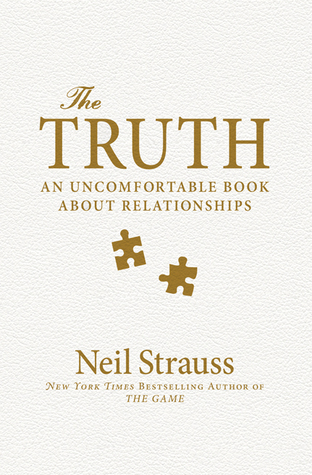
“The Truth” by Neil Strauss is a memoir that explores the author’s journey to understand and come to terms with his own relationships and emotions. The book is a continuation of Strauss’s earlier work, “The Game,” which chronicled his experiences in the world of pickup artistry and seduction.
In “The Truth,” Strauss reflects on the destructive patterns in his own relationships, including his struggles with sex addiction, infidelity, and dishonesty. He embarks on a journey of self-discovery, seeking the guidance of therapists, coaches, and spiritual leaders in his quest for personal growth and healing.
Throughout the book, Strauss delves into his own emotions and vulnerabilities, sharing intimate details of his personal life with the reader. He also examines the larger societal issues surrounding masculinity and relationships, offering insightful commentary on the challenges that many men face in connecting with others in a meaningful way.
Ultimately, “The Truth” is a raw and honest portrayal of one man’s journey to find meaning and connection in his life. Strauss’s candid reflections and self-examination make the book a compelling read, and his insights into the complexities of human relationships are both poignant and thought-provoking. The book is a powerful reminder of the importance of honesty, vulnerability, and self-awareness in our personal lives and relationships.
The author is raw and uncensored while talking about many things that would make someone’s stomach turn upside down. He is authentic and matter-of-fact about the events described in the book while perfectly bringing out their emotional impact. It provides a lot of perspectives that may challenge the reader because the author questions these ideas relentlessly in his quest to overcome his demons.
Halfway through the book, I found myself rooting for a happy ending for Neil even though I did not know how the book might end. I was very conventional in my ideas about relationships, so I was hoping for my definition of a happy ending, but I had no idea what his vision of a happy ending could be.
Enchiridion by Epictetus

“Enchiridion” is a handbook of Stoic philosophy by the Greek philosopher Epictetus. The book is a compilation of his teachings, delivered in the form of concise aphorisms and practical advice for living a virtuous life.
The book’s main focusis on the Stoic principles of personal ethics, such as self-control, humility, and acceptance of one’s fate. Epictetus stresses the importance of cultivating inner resilience and focusing on what is within one’s control, rather than becoming preoccupied with external circumstances.
The book is divided into short chapters, each addressing a specific aspect of Stoic philosophy. These chapters cover a wide range of topics, from dealing with difficult people and situations to finding meaning and purpose in life.
One of the key themes of “Enchiridion” is the concept of detachment from external things. Epictetus argues that by freeing ourselves from the pursuit of wealth, status, and material possessions, we can cultivate inner peace and live a more fulfilling life. He also stresses the importance of accepting one’s own limitations and recognizing the inherent value of all people, regardless of their social status or accomplishments.
I think the book serves as a good introduction to stoicism and offers a lot of practical advice. I look forward to exploring stoic philosophy and may consider re-reading the book at a later stage.
Jonathan Livingston Seagull by Richard Bach

“Jonathan Livingston Seagull” is a novella written by Richard Bach. The story follows the journey of a seagull named Jonathan Livingston, who is dissatisfied with the limitations of his mundane life and seeks to transcend them.
Jonathan’s quest for self-improvement leads him to break the rules of his flock by performing daring aerial feats and exploring the limits of his own potential. Along the way, he meets other seagulls who share his passion for flight and his desire for self-discovery.
As Jonathan continues to push his own limits, he realizes that his true purpose is not simply to be the best seagull, but to inspire others to find their own inner strength and potential. He becomes a teacher and mentor to other seagulls, sharing his wisdom and experience with those who are willing to listen.
Throughout the book, Bach uses the metaphor of flight to explore themes of personal growth, self-discovery, and the pursuit of excellence. The story is a powerful reminder of the importance of following one’s own path in life, even if it means breaking free from the expectations of others.
“Jonathan Livingston Seagull” is a timeless classic that has inspired readers for decades with its message of hope and empowerment. The book encourages us to believe in ourselves and to pursue our dreams, no matter how difficult or unconventional they may seem.
I am noticing that a lot of these smaller books appear to be simple but pack a lot of wisdom if you read between the lines. The themes explored in the book are evergreen which makes it perfect for the occasional revisit when you need some optimism in your life.
The 5 AM Club by Robin Sharma

“The 5 AM Club” is a self-help book by Robin Sharma that outlines a morning routine designed to help individuals achieve peak productivity and personal growth.
The book is structured around a fable that follows the journey of a struggling artist and a burnt-out entrepreneur who meet a quirky, yet wise billionaire. The billionaire reveals the secrets of his morning routine, which involves waking up at 5 AM and engaging in a series of rituals designed to improve his physical, mental, and spiritual well-being.
The book’s central thesis is that waking up early and using the first hour of the day for personal growth and development can have a transformative impact on one’s life. Sharma outlines a detailed 20/20/20 formula: spending the first 20 minutes of the day in physical exercise, the second 20 minutes in mental reflection and planning, and the final 20 minutes in spiritual practice or gratitude.
Throughout the book, Sharma also covers a range of other topics related to personal growth and productivity, including the importance of developing a growth mindset, the power of storytelling, and the role of leadership in shaping one’s life and career.
I would recommend taking this book slow and allowing the subject matter to sink in. I found myself dismissing some of the ideas immediately thinking “this can’t work.” Books like this often propose systems and methods you can use to make radical changes in your life. It’s not possible to overhaul your entire life by making drastic changes so you have to make small changes believing that it’s doable.
The Art of Thinking Clearly by Rolf Dobelli
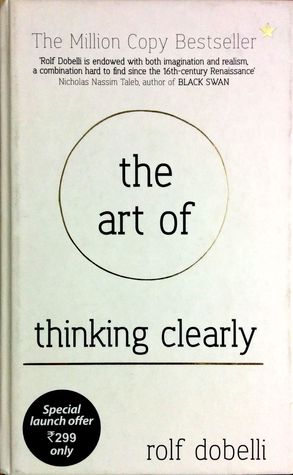
“The Art of Thinking Clearly” is a book by Swiss writer Rolf Dobelli that explores common thinking errors, biases, and fallacies that can lead to poor decision-making and judgment. I saw my boss reading this book and struck up a conversation about it. There is a lot to unpack in this book so I think might be writing more articles about the contents of this book.
The book is structured as a series of 99 short chapters, each focused on a different cognitive bias or mistake that humans are prone to making. Some of the key topics covered include confirmation bias, sunk cost fallacy, survivorship bias, and the halo effect.
Throughout the book, Dobelli uses real-world examples and studies to illustrate how these thinking errors can impact decision-making in a variety of contexts, including personal finance, relationships, and business. He also provides practical tips and strategies for avoiding these biases and making better decisions.
One of the central themes of the book is the importance of critical thinking and self-awareness in overcoming these cognitive biases. Dobelli encourages readers to question their assumptions, seek out diverse perspectives, and be willing to change their minds in the face of new evidence.
So Good They Can’t Ignore You by Cal Newport
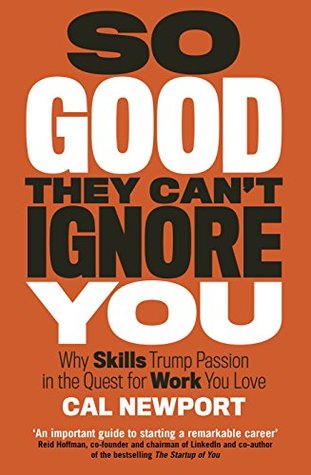
“So Good They Can’t Ignore You” is a book by Cal Newport that challenges the popular notion that passion is the key to career success and instead advocates for a more deliberate and skill-focused approach.
The book argues that the idea of following one’s passion is flawed because it assumes that people have pre-existing passions waiting to be discovered, rather than acknowledging that passions are often developed over time as a result of deliberate practice and mastery.
Newport emphasizes the importance of building career capital – a set of rare and valuable skills that can be leveraged for greater control and autonomy in one’s career. He advocates for a focus on deliberate practice, seeking out challenging and meaningful work, and developing a reputation for excellence in one’s field.
Throughout the book, Newport provides numerous examples of individuals who have achieved career success by adopting this deliberate approach, and offers practical strategies for developing career capital and building a fulfilling career.
One of the key takeaways from the book is the importance of developing a “craftsman mindset” – a focus on continuous improvement and deliberate practice in one’s work. Newport argues that by developing a craftsman mindset and focusing on building skills and expertise, individuals can achieve greater satisfaction and success in their careers.
Overall, “So Good They Can’t Ignore You” is a thought-provoking and practical guide to building a fulfilling and successful career. By challenging the notion of following one’s passion and emphasizing the importance of deliberate practice and skill development, Newport offers readers a valuable framework for achieving career success on their own terms.
I would recommend this book to anyone who wants happiness from their work. This book is super relevant in our world today where people are more unhappy with their jobs than ever before. I have used concepts from this book to help people find their passion in life while also discovering mine. I absolutely love this book.
The Subtle Art of Not Giving a F*ck by Mark Manson

Disclaimer: I love Mark and read every word he writes. I understand that many people think he is only famous because he drops F-bombs in his book, among other similar reasons. I understand your point and respectfully ask you to go fuck yourselves.
“The Subtle Art of Not Giving a F*ck” is a book by Mark Manson that challenges the conventional self-help approach of trying to be positive all the time and instead advocates for a more realistic and nuanced approach to life.
The book argues that trying to avoid negative emotions and experiences is ultimately futile, and that true happiness and fulfillment come from embracing the difficulties and challenges of life. Manson encourages readers to accept their limitations, prioritize what truly matters to them, and take responsibility for their own happiness.
Throughout the book, Manson uses humor and real-life examples to illustrate his points, and offers practical advice for developing a more positive and resilient mindset. He also addresses common misconceptions about happiness and success, challenging readers to question their own assumptions and values.
One of the central themes of the book is the idea of choosing one’s values and priorities, rather than simply accepting those of society or others. Manson encourages readers to identify what is truly important to them and to align their actions and behaviors accordingly.
The Last Lecture by Randy Pausch
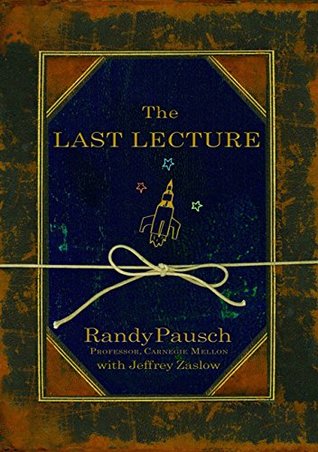
“The Last Lecture” is a book by Randy Pausch, based on a final lecture he gave at Carnegie Mellon University after being diagnosed with terminal pancreatic cancer.
The book reflects on Pausch’s life experiences and the lessons he learned along the way, with a particular focus on achieving one’s childhood dreams. Pausch emphasizes the importance of setting specific and achievable goals, and of pursuing one’s passions with dedication and persistence.
Throughout the book, Pausch shares anecdotes and personal stories that illustrate his points, and offers practical advice for overcoming obstacles and achieving one’s goals. He also reflects on the value of perseverance and resilience in the face of adversity, drawing on his own experiences battling cancer.
One of the key themes of the book is the idea of living in the moment and cherishing the time we have with loved ones. Pausch encourages readers to appreciate the people and experiences in their lives, and to make the most of every opportunity.
Overall, “The Last Lecture” is a moving and inspiring book that challenges readers to reflect on their own lives and priorities. Pausch’s insights and advice are grounded in his own experiences, and offer a valuable perspective on how to achieve success, overcome obstacles, and find meaning and purpose in life.
Brain Droppings by George Carlin

“Brain Droppings” is a book by the late comedian George Carlin, consisting of a collection of his musings, observations, and humorous insights on a wide range of topics.
The book is organized into short, standalone entries that cover everything from politics and religion to everyday life and the human experience. Carlin’s writing is irreverent and provocative, challenging readers to question their assumptions and preconceptions about the world.
Throughout the book, Carlin uses his trademark wit and wordplay to offer biting commentary on contemporary culture and society. He is particularly critical of political correctness and the constraints it places on free expression, as well as the hypocrisy and absurdity of many social norms and conventions.
Despite its humorous tone, “Brain Droppings” also contains moments of profound insight and reflection. Carlin offers poignant commentary on topics such as aging, mortality, and the human condition, demonstrating a depth and complexity that is often overlooked in his more well-known stand-up routines.
I listened to the audiobook narrated by Carlin. He is witty, amusing and entertaining from start to finish. I listen to his works anytime I need to laugh. His astute observations about the English language are a treat for those who like me are passionate about the language and enjoy intelligent humor.
When Will Jesus Bring the Pork Chops by George Carlin

“When Will Jesus Bring the Pork Chops?” is a book by the late comedian George Carlin, in which he offers his satirical and irreverent commentary on a wide range of topics, including politics, religion, culture, and everyday life.
One of the key themes of the book is the idea of questioning authority and resisting conformity. Carlin is highly critical of organized religion, government, and other institutions that he believes seek to control and manipulate people for their own ends. He encourages readers to think for themselves and to challenge the status quo, offering provocative and often humorous insights along the way.
Despite its irreverent tone, “When Will Jesus Bring the Pork Chops?” also contains moments of poignancy and introspection. Carlin reflects on his own mortality and the fleeting nature of human existence, and offers insights into the human condition that are both profound and entertaining.
Napalm and Silly Putty by George Carlin

One of the key themes of the book is the idea of language and its role in shaping our understanding of the world around us. Carlin is highly critical of euphemisms and political correctness, arguing that they often serve to obscure the truth and stifle honest communication. He also explores the ways in which language is used to manipulate and control people, from advertising slogans to political rhetoric.
Another theme of the book is the absurdity of modern life, as Carlin takes aim at everything from corporate culture to the self-help industry. He uses humor to highlight the contradictions and paradoxes of contemporary society, and encourages readers to embrace the absurdity of existence rather than trying to fight it.
Despite its irreverent tone, “Napalm and Silly Putty” also contains moments of introspection and social commentary. Carlin reflects on his own life and experiences, and offers insights into the human condition that are both profound and entertaining.
I Can’t Make This Up: Life Lessons by Kevin Hart & Neil Strauss

“I Can’t Make This Up: Life Lessons” is a memoir by comedian and actor Kevin Hart, co-written with Neil Strauss. The book chronicles Hart’s rise to fame from his humble beginnings in Philadelphia to becoming one of the most successful comedians and actors in the entertainment industry.
Throughout the book, Hart shares personal stories and insights about his life, career, and relationships. He talks candidly about the struggles and setbacks he faced early in his career, including poverty, rejection, and personal tragedies. He also shares the lessons he learned from these experiences and how they helped him grow as a person and performer.
One of the key themes of the book is the importance of hard work, determination, and perseverance in achieving success. Hart describes his relentless work ethic and his willingness to take risks and push himself to achieve his goals. He also emphasizes the importance of staying true to oneself and following one’s passions, even in the face of criticism or rejection.
Another theme of the book is the role of humor and laughter in overcoming adversity and finding happiness. Hart shares his belief in the power of laughter to heal and uplift people, and describes how he uses humor to connect with his audience and spread positivity.
Throughout the book, Hart’s trademark humor and wit shine through, making for an entertaining and engaging read. He peppers the book with jokes, anecdotes, and pop culture references that will resonate with readers of all ages.
Even though I have this book in hardcover, I still feel like the audiobook version is so much better because it is narrated by Kevin Hart. The dude is funny and knows how to laugh on himself. Neil Strauss is a master at writing memoirs and this book is no different. There are many portions of the book that hooked me and I found many life lessons I want to share from the book that I learned in my life as well.
How to Make Anyone Fall in Love with You by Leil Lowndes

“How to Make Anyone Fall in Love with You” by Leil Lowndes is a self-help book that aims to provide practical advice and strategies for building romantic relationships. The author draws on research from psychology and interpersonal communication to offer insights into the dynamics of attraction and how to create a deep emotional connection with someone.
The book is divided into sections that cover different aspects of romantic attraction, such as body language, conversation skills, and the power of suggestion. Lowndes presents a range of techniques and exercises that are designed to help readers develop their confidence, enhance their communication skills, and create a magnetic presence that will attract potential partners.
One of the key themes of the book is the importance of nonverbal communication in building attraction. Lowndes offers tips and exercises for using body language and facial expressions to convey interest, confidence, and attractiveness. She also provides advice on how to read the nonverbal cues of others to gauge their level of interest and build rapport.
Another key theme of the book is the power of conversation in building emotional connections. Lowndes offers advice on how to use conversation to build rapport, create positive emotions, and establish common ground with potential partners. She also provides tips for maintaining a positive attitude and avoiding negative communication habits that can undermine romantic attraction.
Throughout the book, Lowndes emphasizes the importance of authenticity and self-awareness in building romantic relationships. She encourages readers to be true to themselves and to take the time to get to know their own strengths and weaknesses before trying to attract others. She also provides guidance on how to overcome personal barriers to love, such as fear of rejection or past relationship traumas.
The Wolf of Wall Street by Jordan Belfort

“The Wolf of Wall Street” is a memoir written by Jordan Belfort, a former stockbroker who was convicted of securities fraud and served time in prison. The book chronicles Belfort’s rise and fall as a high-flying stockbroker in the late 1980s and early 1990s, detailing his outrageous behavior, drug use, and financial crimes.
Belfort begins the book by describing his early days as a young stockbroker, where he quickly discovers his talent for selling penny stocks to unsuspecting investors. He eventually starts his own firm, Stratton Oakmont, which becomes one of the most successful brokerage firms in the country.
The book provides a detailed account of Belfort’s lavish lifestyle during this time, which includes expensive cars, yachts, and mansions. He also describes the rampant drug use among him and his colleagues, which fuels their reckless behavior and leads to a downward spiral of addiction and criminal activity.
As Belfort’s crimes are eventually exposed, the book takes a dark turn as he is arrested, prosecuted, and ultimately sent to prison. Despite the consequences of his actions, Belfort remains unrepentant and continues to glorify his lifestyle and behavior.
Overall, “The Wolf of Wall Street” offers a shocking and often disturbing glimpse into the world of high finance and the excesses of the 1980s and 1990s. Belfort’s candid and sometimes self-aggrandizing account of his life provides a cautionary tale of the dangers of greed and the pursuit of wealth at any cost.
Models by Mark Manson

“Models: Attract Women Through Honesty” is a self-help book by Mark Manson aimed at men looking to improve their dating and romantic lives. The book presents a unique approach to dating that emphasizes the importance of honesty, vulnerability, and authenticity in forming meaningful connections with women.
Manson argues that traditional dating advice, which often involves using manipulative techniques and game-playing to attract women, is ultimately ineffective and counterproductive. Instead, he advocates for men to focus on improving themselves and becoming more confident and authentic, which will naturally attract women who are compatible with them.
The book is divided into three sections. The first section focuses on the inner work that men need to do to become more attractive to women, such as developing self-awareness, setting boundaries, and cultivating a sense of purpose and passion in life.
The second section provides practical advice on how to approach and interact with women, with an emphasis on honest communication and building rapport. Manson stresses the importance of being vulnerable and authentic, even if it means risking rejection.
The final section of the book deals with long-term relationships and how to maintain a healthy, fulfilling relationship with a partner. Manson emphasizes the importance of ongoing communication, mutual respect, and maintaining a sense of individuality within the relationship.
I absolutely loved the book and I am sure to revisit the book. The tone and language of the book are engaging. A highly-recommended must-read for those interested in improving their inner game. I read specific sections of the book from time to time. I often quote pieces of advice given in the book when I am discussing things with friends. There are so many valuable often counter-intuitive notions that I found useful.
Catch Me If You Can by Frank Abignail Jr.

“Catch Me If You Can” is a true story about the life of Frank Abagnale Jr., who became one of the most famous con artists in history. The book is an autobiography that tells the story of how Abagnale managed to pass himself off as a pilot, a doctor, and a lawyer, among other professions, while committing various forms of fraud.
The book starts with Abagnale’s childhood, where he describes how his parents’ divorce affected him and how he became interested in becoming a con artist. He then goes on to explain how he started forging checks and impersonating people at a young age and eventually became so good at it that he was able to fool even the most experienced professionals.
Abagnale then details his experiences as a fake pilot, where he managed to fly over 1 million miles without ever having a pilot’s license. He also describes how he posed as a doctor and a lawyer, and how he managed to cash fake checks worth millions of dollars.
Throughout the book, Abagnale also explains how he managed to evade the authorities for years, even as he was being chased by the FBI and Interpol. He eventually turned himself in and served time in prison, but he later became a consultant for the FBI and helped them catch other con artists.
“Catch Me If You Can” is a fascinating and entertaining read that provides insight into the mind of a master con artist. Abagnale’s story has been adapted into a movie and a Broadway musical, both of which have been highly successful.
Rework by Jason Fried

“Rework” is a book written by Jason Fried and David Heinemeier Hansson, the founders of 37signals, a software development company. The book offers unconventional and practical advice on how to start and run a successful business.
The book challenges many traditional business practices and encourages readers to question established norms. The authors argue that many of the standard business practices, such as writing a business plan, hiring employees, and seeking investors, are unnecessary and can actually be harmful to a business’s success.
Instead, the authors suggest a “less is more” approach to business, focusing on simplicity, efficiency, and innovation. They advocate for strategies such as working with a small team, embracing constraints, and launching products quickly to test and iterate on ideas.
The book is divided into short, easy-to-read chapters, each focused on a different aspect of business. The authors use real-world examples from their own experiences and from other successful companies to illustrate their points.
Some of the key takeaways from the book include the importance of staying lean, focusing on what truly matters, embracing constraints, and learning from failures. The book also stresses the importance of creating a great work culture and valuing your employees.
The book is highly relevant in the business world in the light of the COVID-19 pandemic and the rise of remote work.
Everybody Writes by Ann Handley

“Everybody Writes” is a book written by Ann Handley, a content marketing expert, and it is a guide to creating effective and engaging content in the digital age. The book emphasizes the importance of writing as a key element of communication in today’s world, and offers practical tips and strategies for creating high-quality content that can be used in a variety of contexts.
The book is divided into four parts, each of which focuses on a different aspect of writing. The first part covers the fundamentals of good writing, including the importance of grammar, punctuation, and style. The second part focuses on how to write for different platforms, such as social media, email, and blogs. The third part provides tips on how to write with a clear and compelling voice, while the fourth and final part focuses on how to optimize your writing for search engines.
Throughout the book, Handley emphasizes the importance of understanding your audience and tailoring your writing to their needs and preferences. She also stresses the importance of creating a consistent brand voice and tone, and of using storytelling techniques to engage and connect with readers.
Some of the key takeaways from the book include the importance of writing as a key element of communication, the value of creating high-quality content that resonates with your audience, and the need to be authentic and genuine in your writing. The book is highly practical and provides numerous examples and case studies to illustrate the concepts it covers.
I often browse through this book when I am writing and take along with me when I am at work. A must-read for content marketers and copywriters. Ann Handley, for me, is the final word on all things content marketing.
The Game of Life and How to Play It by Florence Scovel Shinn

“The Game of Life and How to Play It” is a self-help book written by Florence Scovel Shinn, a metaphysical lecturer and teacher. The book was first published in 1925 and has since become a classic in the field of personal development.
The book presents a spiritual and metaphysical perspective on life, and offers practical advice on how to live a more fulfilling and successful life. Shinn emphasizes the power of positive thinking and the importance of aligning your thoughts and beliefs with your desires.
The book is divided into several chapters, each of which focuses on a different aspect of life. Shinn covers topics such as the power of affirmations, the law of attraction, the importance of forgiveness, and the role of intuition in decision-making.
Shinn also provides numerous examples and stories to illustrate her points, and offers practical exercises and affirmations that readers can use to apply the concepts in their own lives.
Some of the key takeaways from the book include the importance of cultivating a positive mindset, the role of visualization in achieving your goals, and the importance of letting go of limiting beliefs and negative emotions. Shinn also stresses the importance of taking action and being open to opportunities that come your way.
Catching the Wolf of Wall Street by Jordan Belfort

“Catching the Wolf of Wall Street” is a memoir written by Jordan Belfort, a former stockbroker and founder of the brokerage firm Stratton Oakmont. The book chronicles Belfort’s rise to wealth and power in the financial world, as well as his eventual downfall and imprisonment for securities fraud and money laundering.
The book is a follow-up to Belfort’s earlier memoir, “The Wolf of Wall Street,” which was adapted into a successful movie starring Leonardo DiCaprio. In “Catching the Wolf of Wall Street,” Belfort provides additional details about his life and experiences, including his time in prison and his efforts to turn his life around after his release.
The book is divided into several parts, each of which covers a different period in Belfort’s life. Belfort provides a detailed account of his rise to success, including his use of high-pressure sales tactics and unethical business practices. He also discusses his personal struggles with drug addiction and his relationships with family and friends.
Belfort’s account of his downfall and imprisonment is also detailed and candid. He discusses his cooperation with the government in their investigation into his business practices, as well as his efforts to rebuild his life and make amends for his past actions.
Rich Dad, Poor Dad by Robert Kiyosaki
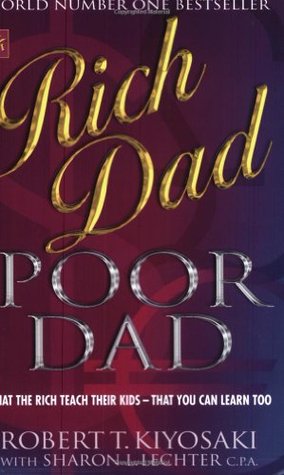
“Rich Dad, Poor Dad” is a personal finance book written by Robert Kiyosaki. The book is based on Kiyosaki’s personal experiences growing up with two “dads” – his biological father, who was a highly educated but financially struggling government employee, and his friend’s father, who was a wealthy entrepreneur and investor.
The book is divided into ten chapters, each of which covers a different lesson or principle related to personal finance and investing. Kiyosaki emphasizes the importance of financial education and encourages readers to think differently about money and wealth.
One of the key themes of the book is the difference between “assets” and “liabilities,” and how understanding this difference can help people build wealth. Kiyosaki also stresses the importance of generating passive income and investing in assets that appreciate in value over time.
Throughout the book, Kiyosaki provides numerous examples and anecdotes to illustrate his points, and offers practical advice and tips for taking control of your finances and building wealth.
Some of the key takeaways from the book include the importance of financial education, the need to develop a mindset of abundance and opportunity, and the value of taking calculated risks and investing in assets that generate passive income.
Overall, “Rich Dad, Poor Dad” is a thought-provoking and engaging book that challenges readers to rethink their approach to money and wealth. The book has become a classic in the field of personal finance and has inspired countless people to take control of their finances and build wealth through smart investing and financial education.
The Monk Who Sold His Ferrari by Robin Sharma

“The Monk Who Sold His Ferrari” is a self-help book written by Robin Sharma, a leadership expert and motivational speaker. The book tells the story of a successful lawyer named Julian Mantle, who decides to leave his high-pressure career and go on a spiritual journey to India.
During his journey, Mantle meets a group of sages who teach him the principles of personal growth and self-discovery. The sages give him a series of exercises and practices to follow, which help him transform his life and find true happiness and fulfillment.
The book is divided into two parts. The first part tells the story of Mantle’s journey to India and his encounters with the sages. The second part provides practical advice and exercises for readers to follow, based on the principles Mantle learned during his journey.
Some of the key themes of the book include the importance of mindfulness and living in the present moment, the value of simplicity and minimalism, and the power of positive thinking and visualization. Sharma also emphasizes the importance of setting clear goals and taking action to achieve them, as well as the importance of cultivating strong relationships and living a balanced life.
Overall, “The Monk Who Sold His Ferrari” is a inspiring and thought-provoking book that challenges readers to rethink their priorities and live a more meaningful and fulfilling life. The book’s teachings have resonated with millions of readers around the world, and it continues to be a popular and influential work in the field of personal growth and self-help.
Never Eat Alone by Keith Ferrazzi
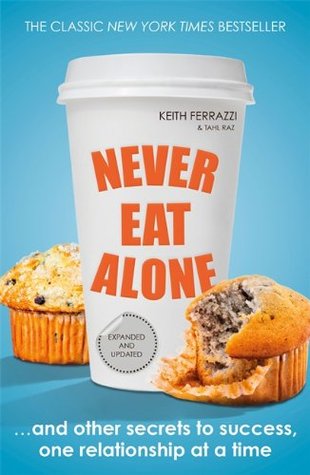
“Never Eat Alone” is a self-help book written by Keith Ferrazzi, a networking expert and entrepreneur. The book is a guide to building and maintaining strong professional relationships, both in person and online.
The book is divided into four parts, each of which covers a different aspect of networking and relationship-building. Ferrazzi emphasizes the importance of authenticity and generosity in building relationships, and provides practical tips and strategies for connecting with others and building meaningful partnerships.
One of the key themes of the book is the importance of networking with a purpose. Ferrazzi encourages readers to think about their goals and objectives, and to network strategically in order to achieve those goals. He also emphasizes the importance of giving back and being of service to others, rather than simply seeking to gain something for oneself.
Throughout the book, Ferrazzi provides numerous examples and anecdotes from his own life and career, as well as from the experiences of other successful professionals. He also provides practical advice on topics such as organizing and hosting events, leveraging social media, and following up with contacts.
Some of the key takeaways from the book include the importance of being proactive and persistent in building relationships, the value of creating a personal brand and reputation, and the power of collaboration and teamwork.
Bounce Forward by Sam Cawthorn
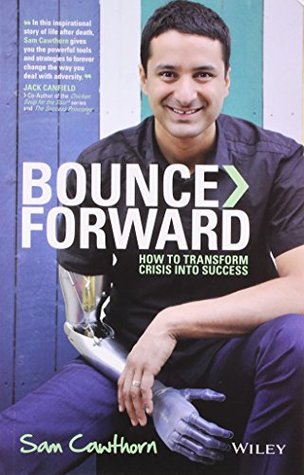
“Bounce Forward” is a self-help book written by Sam Cawthorn, a motivational speaker and entrepreneur who has overcome significant challenges in his life. The book is a guide to resilience and overcoming adversity, and provides practical advice and strategies for bouncing back from setbacks and achieving success.
The book is divided into three parts, each of which covers a different aspect of resilience and personal growth. Cawthorn shares his own personal story of overcoming a serious car accident that left him with significant injuries, and provides practical advice and exercises for readers to follow in order to develop their own resilience and bounce forward from challenges.
One of the key themes of the book is the importance of reframing challenges as opportunities for growth and learning. Cawthorn encourages readers to embrace failure and setbacks, and to use them as a catalyst for positive change and personal growth.
Throughout the book, Cawthorn provides numerous examples and anecdotes from his own life and career, as well as from the experiences of other successful individuals. He also provides practical advice on topics such as goal-setting, time management, and building a support network.
Some of the key takeaways from the book include the importance of developing a growth mindset, the value of setting clear goals and taking action to achieve them, and the power of perseverance and grit in overcoming challenges.
I met Sam when he was leading a three-day workshop in New Delhi. He is a master storyteller. This book compels you to think about how you deal with crisis in your life and offers some counterintuitive advice.
We Are All Weird by Seth Godin

“We Are All Weird” is a non-fiction book written by marketing expert and entrepreneur Seth Godin. The book challenges the idea of “normal” and explores how cultural and technological changes are reshaping society and creating new opportunities for individuals and businesses.
Godin argues that the traditional idea of mass marketing and catering to the “average” consumer is no longer effective in a world where people have diverse interests, preferences, and values. Instead, he encourages individuals and businesses to embrace their “weirdness” and connect with others who share their unique interests and passions.
The book is divided into two parts. In the first part, Godin explores how the concept of “normal” has changed over time, and how the rise of the internet and social media has empowered individuals to connect with others who share their interests and values. In the second part, he provides practical advice and strategies for individuals and businesses to embrace their weirdness and connect with like-minded individuals.
One of the key themes of the book is the importance of authenticity and transparency in connecting with others. Godin encourages readers to be true to themselves and their values, and to create genuine connections with others who share their interests and passions. He also emphasizes the importance of creating “tribes” of like-minded individuals who can support and inspire each other.
Throughout the book, Godin provides numerous examples and case studies from a variety of industries, including music, fashion, and technology. He also provides practical advice on topics such as branding, marketing, and social media.
The Five Love Languages by Gary Chapman

“The Five Love Languages” is a self-help book written by Gary Chapman that explores the concept of love languages and how they can be used to improve relationships. According to Chapman, people have different ways of expressing and receiving love, and understanding these differences can help couples communicate more effectively and build stronger relationships.
The book is divided into two main parts. In the first part, Chapman introduces the concept of love languages and describes the five different types: words of affirmation, quality time, receiving gifts, acts of service, and physical touch. He explains how each love language is a way of expressing and receiving love, and how they can be used to show appreciation and build emotional connection in relationships.
In the second part of the book, Chapman provides practical advice and exercises for couples to identify their own love languages and learn how to communicate with their partners in their preferred language. He also discusses common challenges that couples face, such as miscommunication and conflict, and provides strategies for overcoming these challenges and building stronger relationships.
One of the key themes of the book is the importance of understanding and respecting your partner’s love language, even if it is different from your own. Chapman emphasizes the value of empathy and compassion in relationships, and encourages readers to be open-minded and non-judgmental in their approach to communication.
Throughout the book, Chapman provides numerous examples and case studies from his own experience as a marriage counselor, as well as from the experiences of couples he has worked with. He also provides practical advice on topics such as forgiveness, intimacy, and maintaining emotional connection over time.
How to Win at the Sport of Business by Mark Cuban

“How to Win at the Sport of Business” is a book written by billionaire entrepreneur and Shark Tank investor Mark Cuban. The book is a collection of blog posts and personal stories from Cuban’s life, focusing on his experiences in business and the lessons he has learned along the way.
The book is divided into twelve chapters, each of which covers a different aspect of business and entrepreneurship. Topics covered in the book include finding your passion, creating a brand, taking risks, and dealing with failure. Cuban draws on his own experiences as a successful entrepreneur to provide practical advice and insights on each of these topics.
One of the key themes of the book is the importance of hard work and determination in achieving success. Cuban emphasizes the value of persistence and the willingness to take risks, and encourages readers to focus on their passions and pursue their goals with passion and dedication.
Throughout the book, Cuban also provides insights into his personal life, sharing stories about his childhood, his early career in technology, and his experiences as a sports team owner. He discusses the challenges he has faced along the way, and the lessons he has learned from both his successes and his failures.
The Four Agreements by Miguel Ruiz

“The Four Agreements” is a book written by Miguel Ruiz that presents a set of principles for personal transformation and spiritual growth. The book draws on the wisdom of ancient Toltec teachings and offers practical advice on how to live a more fulfilling and meaningful life.
The four agreements described in the book are as follows:
- Be impeccable with your word: This agreement emphasizes the importance of speaking with integrity and being mindful of the impact of our words on others. Ruiz encourages readers to use their words to build others up, rather than tear them down.
- Don’t take anything personally: This agreement advises readers not to take things personally, and to recognize that other people’s actions and opinions are a reflection of their own reality, not ours. Ruiz encourages readers to let go of the need for external validation and to focus on their own inner peace and happiness.
- Don’t make assumptions: This agreement encourages readers to avoid making assumptions about other people or situations, and to seek clarity and understanding through open and honest communication. Ruiz emphasizes the importance of asking questions and being willing to listen and learn.
- Always do your best: This agreement encourages readers to do their best in every situation, and to recognize that their best may vary depending on the circumstances. Ruiz advises readers to focus on progress, not perfection, and to strive for personal growth and development.
Throughout the book, Ruiz provides practical examples and exercises to help readers apply these principles to their own lives. He emphasizes the importance of self-awareness and mindfulness, and encourages readers to take responsibility for their own happiness and well-being.
Harry Potter Series by J.K. Rowling



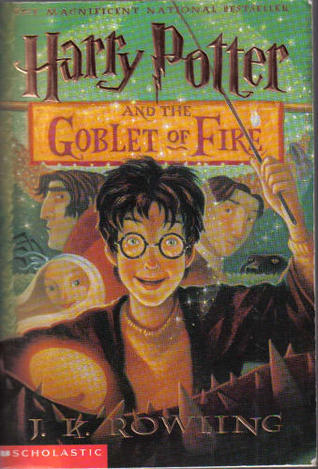



The Harry Potter series is a seven-book series written by J.K. Rowling, telling the story of a young boy named Harry Potter, who discovers he is a wizard and embarks on a journey of self-discovery, friendship, and adventure.
The series begins with “Harry Potter and the Philosopher’s Stone” (or “Sorcerer’s Stone” in the United States), where Harry learns that he is a wizard and begins attending Hogwarts School of Witchcraft and Wizardry. Alongside his friends Ron Weasley and Hermione Granger, Harry uncovers a plot to return the dark wizard Voldemort to power and must work together to stop him.
In the subsequent books, the trio faces new challenges and adventures, including the return of Voldemort, the rise of a new dark wizard, and the discovery of the true nature of the wizarding world’s power structure. Along the way, they encounter many memorable characters, including Professor Dumbledore, Hagrid, and Severus Snape, among others.
Throughout the series, themes such as love, friendship, courage, and the consequences of choices are explored, making it a beloved and timeless series for readers of all ages. Rowling’s world-building is rich and detailed, and her characters are well-rounded and complex, making them easy to relate to and care about.
The Harry Potter series has had a profound impact on popular culture and has sold over 500 million copies worldwide. It has been adapted into a successful film franchise and has inspired a devoted fan community, who continue to celebrate and engage with the series through various mediums.
I am a die-hard Harry Potter fan. I have read all books cover-to-cover more times than I can count. I revisit these books once every year. I enjoy the audiobook versions narrated by Stephen Fry and the other one narrated by Jim Dale.
Storyshowing by Sam Cawthorn
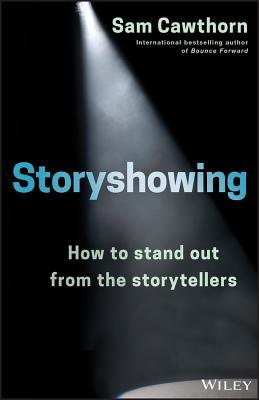
“Storyshowing: How to Stand Out from the Storytellers” is a book written by Sam Cawthorn, a motivational speaker and author. In the book, Cawthorn explores the power of storytelling and how individuals and organizations can use it to stand out from the competition.
Cawthorn argues that in today’s world, where information is abundant and attention spans are short, it’s not enough to just tell stories. Instead, individuals and organizations need to learn how to “storyshow” – to bring their stories to life through creative and engaging presentations that captivate their audiences.
The book is divided into three parts. The first part focuses on the importance of storytelling and why it matters in today’s world. Cawthorn shares his own personal story of overcoming adversity and the role that storytelling played in his journey.
The second part of the book provides practical tips and techniques for effective storytelling, including how to structure a story, use humor and emotion, and engage with your audience. Cawthorn also emphasizes the importance of authenticity and vulnerability in storytelling, as well as the need to tailor your story to your audience.
The final part of the book explores how to use storytelling to achieve specific goals, such as building brand awareness, driving sales, and inspiring change. Cawthorn shares real-world examples of organizations and individuals who have successfully used storytelling to achieve their goals.
Unfu*k Yourself by Gary John Bishop

“Unfu*k Yourself” is a self-help book by Gary John Bishop that aims to help readers overcome self-limiting beliefs and negative self-talk, and achieve their goals in life. The book is divided into seven chapters, each focusing on a different aspect of self-improvement.
In the first chapter, Bishop introduces the concept of “the inner voice” – the negative self-talk that holds us back from achieving our goals. He encourages readers to recognize their inner voice and confront it head-on, in order to start making positive changes in their lives.
In the second chapter, Bishop explains the importance of taking full responsibility for our lives, rather than blaming external factors for our problems. He argues that by taking ownership of our choices and actions, we can gain a greater sense of control over our lives.
The third chapter focuses on the idea of “letting go” – of the past, of negative emotions, and of things that no longer serve us. Bishop encourages readers to embrace change and to be willing to let go of old patterns and habits in order to move forward.
In the fourth chapter, Bishop introduces the concept of “grit” – the perseverance and determination needed to achieve our goals. He argues that by embracing discomfort and pushing through difficult times, we can build resilience and become stronger.
The fifth chapter focuses on the importance of self-compassion – being kind and forgiving to ourselves, rather than constantly criticizing and judging ourselves. Bishop encourages readers to practice self-acceptance and to treat themselves with the same compassion they would offer to a friend.
In the sixth chapter, Bishop explores the idea of “action” – taking concrete steps towards our goals, rather than just thinking or talking about them. He encourages readers to set specific, measurable goals and to take consistent, deliberate action towards achieving them.
Finally, in the seventh chapter, Bishop emphasizes the importance of “gratitude” – being thankful for the good things in our lives, rather than focusing on the negative. He argues that by cultivating a sense of gratitude, we can gain perspective and appreciate the beauty of life.
The Great Gatsby by F. Scott Fitzgerald

“The Great Gatsby” is a novel written by F. Scott Fitzgerald, first published in 1925. The story is set in the 1920s and follows the lives of several characters in the fictional town of West Egg on Long Island, including the narrator Nick Carraway, his wealthy neighbor Jay Gatsby, and Nick’s cousin Daisy Buchanan.
Gatsby, who is known for throwing lavish parties, is in love with Daisy, who is married to Tom Buchanan. The novel explores themes such as the corrupting influence of wealth and the American Dream, as Gatsby tries to win Daisy’s love and acceptance by accumulating wealth and social status.
Throughout the story, Fitzgerald paints a picture of the glamorous, but ultimately empty, lifestyle of the wealthy elite of the era, and exposes the darker side of the American Dream, revealing how it can lead to disillusionment and tragedy.
“The Great Gatsby” has become a classic of American literature, praised for its vivid depiction of the Roaring Twenties, its complex characters, and its commentary on the American Dream. The novel has been adapted into several films, stage productions, and even an opera, and continues to captivate readers and audiences around the world.
I read this book after watching the 2013 adaptation starring Leonardo DiCaprio.
The Thank You Economy by Gary Vaynerchuk

“The Thank You Economy” is a book written by entrepreneur and social media expert Gary Vaynerchuk, published in 2011. The book discusses the importance of building strong relationships with customers in the current business landscape, where social media has changed the way we communicate and connect with one another.
Vaynerchuk argues that the rise of social media has created an economy where businesses must focus on providing exceptional customer service and personalized experiences in order to succeed. He emphasizes that the key to success in this new economy is to genuinely care about your customers and to show appreciation for their business.
The book provides numerous examples of companies that have successfully embraced the Thank You Economy, such as Zappos, Apple, and Virgin America. Vaynerchuk also shares his own experiences in building his businesses, including Wine Library and VaynerMedia.
In addition to discussing the importance of customer service and relationships, the book also explores how social media can be used as a tool to engage with customers and build brand loyalty. Vaynerchuk provides practical advice for businesses looking to leverage social media platforms such as Twitter, Facebook, and YouTube.
A Short History of Nearly Everything by Bill Bryson

“A Short History of Nearly Everything” is a non-fiction book written by American-British author Bill Bryson, published in 2003. The book is a popular science book that explores the history of the universe, from the Big Bang to the present day.
Bryson covers a wide range of scientific topics, including the origins of the universe, the formation of the Earth, the evolution of life, and the history of human civilization. He delves into the lives and discoveries of some of the most influential scientists in history, such as Charles Darwin, Albert Einstein, and Isaac Newton.
What sets “A Short History of Nearly Everything” apart from other science books is Bryson’s engaging writing style. He takes complex scientific concepts and presents them in a way that is accessible and entertaining to readers of all backgrounds.
Throughout the book, Bryson emphasizes the interconnectedness of scientific disciplines, demonstrating how discoveries in one area often have implications for others. He also addresses the limitations and uncertainties of scientific knowledge, emphasizing the importance of curiosity and the need for ongoing research.
Solving the Puzzle of Procrastination by Timothy A. Pychyl

“Solving the Puzzle of Procrastination” is a self-help book written by Timothy A. Pychyl, a psychology professor at Carleton University in Ottawa, Canada. The book explores the reasons behind procrastination and provides practical strategies to overcome it.
Pychyl argues that procrastination is a form of self-regulation failure, and that it is driven by emotional factors such as anxiety, fear of failure, and a lack of self-confidence. He also emphasizes that procrastination is not a time-management problem, but rather a problem with managing emotions and motivation.
The book provides a variety of strategies to help readers overcome procrastination, including developing a sense of purpose, setting achievable goals, breaking tasks into smaller steps, and using “implementation intentions” to plan for action. Pychyl also provides guidance on how to deal with common obstacles to procrastination, such as distractions and perfectionism.
One of the strengths of “Solving the Puzzle of Procrastination” is that it is based on empirical research, including Pychyl’s own studies on the topic. Pychyl also draws on insights from cognitive and social psychology, neuroscience, and philosophy to provide a comprehensive understanding of procrastination.
The Art of Mindfulness by Thich Nhat Hanh

“The Art of Mindfulness” is a book written by Thich Nhat Hanh, a Vietnamese Zen master and peace activist. The book is a practical guide to mindfulness meditation and how it can be applied to daily life.
Thich Nhat Hanh explains that mindfulness is the practice of being present in the moment and fully engaging with whatever we are doing. He emphasizes the importance of mindfulness in reducing stress, improving focus and concentration, and fostering a sense of inner peace and happiness.
The book provides a variety of techniques for practicing mindfulness meditation, including breath awareness, body scan, and walking meditation. Thich Nhat Hanh also provides guidance on how to integrate mindfulness into daily activities, such as eating, working, and communicating with others.
One of the unique aspects of “The Art of Mindfulness” is the emphasis on the importance of community in practicing mindfulness. Thich Nhat Hanh emphasizes the value of practicing mindfulness in a group setting, and provides guidance on how to establish and participate in mindfulness groups.
Throughout the book, Thich Nhat Hanh emphasizes the interconnectedness of all things and the importance of living in harmony with nature and each other. He encourages readers to cultivate compassion and loving-kindness towards themselves and others.
Fantastic Beasts and Where to Find Them by Newt Scamander, J.K. Rowling

“Fantastic Beasts and Where to Find Them” is a book written by J.K. Rowling, using the pen name of Newt Scamander. The book is a fictional textbook in the “Harry Potter” universe, providing descriptions and classifications of magical creatures.
The book is set in the wizarding world and features a range of creatures, including dragons, unicorns, and hippogriffs, as well as some lesser-known beasts. Each entry includes information on the creature’s appearance, habits, and magical abilities, as well as any known uses of the creature in wizarding society.
The book is notable for its detailed and imaginative descriptions of magical creatures, and for its inclusion of handwritten notes and annotations from various characters in the “Harry Potter” series, such as Harry Potter himself, Ron Weasley, and Hermione Granger.
The Tales of Beedle the Bard by J.K. Rowling

“The Tales of Beedle the Bard” is a book written by J.K. Rowling, set in the fictional world of Harry Potter. The book is a collection of fairy tales that are popular among wizards and witches, with each story containing magical elements and a moral lesson.
The book features five tales, including “The Fountain of Fair Fortune,” “The Warlock’s Hairy Heart,” and “The Tale of the Three Brothers,” which was mentioned in the final book of the Harry Potter series, “Harry Potter and the Deathly Hallows.” The stories are accompanied by notes and commentary from Albus Dumbledore, the former headmaster of Hogwarts School of Witchcraft and Wizardry.
In addition to being an entertaining read, “The Tales of Beedle the Bard” also provides insight into the wizarding world and its values. The stories explore themes such as the dangers of greed, the importance of love and friendship, and the consequences of using dark magic.
The book also includes a “translator’s note” from Hermione Granger, a main character in the Harry Potter series, explaining how the stories were translated from their original runic script.
Quidditch Through the Ages by J.K. Rowling

“Quidditch Through the Ages” is a book written by J.K. Rowling, set in the fictional world of Harry Potter. The book is a fictional guide to the popular wizarding sport of Quidditch, providing detailed information on its history, rules, and equipment.
The book is presented as a Hogwarts Library book, and features notes and commentary from various characters in the Harry Potter series, such as Harry Potter himself and Albus Dumbledore, the former headmaster of Hogwarts School of Witchcraft and Wizardry.
“Quidditch Through the Ages” explores the evolution of the sport from its early beginnings, including the creation of the game’s distinctive flying broomsticks and the development of the Golden Snitch. The book also details the various positions on a Quidditch team, as well as the rules and regulations that govern the sport.
In addition to being an entertaining read for fans of the Harry Potter series, “Quidditch Through the Ages” also provides insight into the world-building and attention to detail that J.K. Rowling put into creating the fictional world of Harry Potter. It adds to the richness of the wizarding world by exploring one of its most beloved and unique aspects.
Hogwarts: An Incomplete and Unreliable Guide by J.K. Rowling
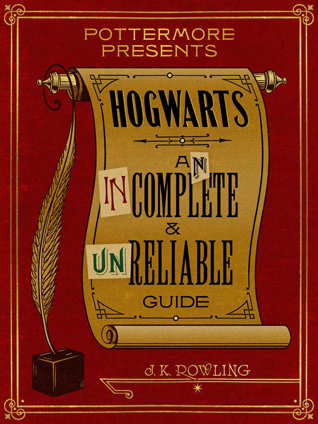
“Hogwarts: An Incomplete and Unreliable Guide” is a short e-book written by J.K. Rowling as part of a series of companion books to the Harry Potter series. The book provides a glimpse into the history and inner workings of Hogwarts School of Witchcraft and Wizardry, including details about its founders, famous Headmasters and Headmistresses, and secret rooms and passages.
The book is divided into several sections, each focusing on a different aspect of Hogwarts. Some of the topics covered in the book include:
- The Hogwarts Express: The book explains how the Hogwarts Express came to be and how it transports students to Hogwarts each year.
- The Founders of Hogwarts: The book provides some background information on the four founders of Hogwarts – Godric Gryffindor, Helga Hufflepuff, Rowena Ravenclaw, and Salazar Slytherin – and how they came together to create the school.
- Hogwarts Ghosts: The book describes some of the ghosts that haunt Hogwarts, including Nearly Headless Nick and the Bloody Baron.
- Headmasters and Headmistresses: The book lists some of the most famous Headmasters and Headmistresses in Hogwarts’ history, including Albus Dumbledore, Armando Dippet, and Phineas Nigellus Black.
- Secret Passages and Rooms: The book reveals some of the hidden rooms and passages within Hogwarts, such as the Room of Requirement and the Chamber of Secrets.
Overall, “Hogwarts: An Incomplete and Unreliable Guide” provides a fascinating glimpse into the magical world of Hogwarts and the history and traditions that make it such a beloved setting in the Harry Potter series.
Rogue Lawyer by John Grisham

“Rogue Lawyer” is a legal thriller novel by John Grisham, published in 2015. The book follows the story of Sebastian Rudd, a criminal defense attorney in the deep South of the United States who represents clients other lawyers refuse to touch.
Rudd is a complex character who doesn’t play by the rules. He works out of a bulletproof van, is armed at all times, and takes on some of the most controversial and dangerous cases. He has an interesting mix of clients, including a drug-addicted teenager charged with murder, a woman accused of killing her husband, and a man who is wrongly convicted of murder.
Throughout the book, Rudd faces a series of challenges, both in and out of the courtroom. He is targeted by corrupt cops and drug dealers, and must also navigate a complicated personal life. His ex-wife is trying to take away his visitation rights with their son, and he is in a tumultuous relationship with a woman named Mugs.
Despite the odds stacked against him, Rudd remains determined to get justice for his clients and expose corruption wherever he finds it. He uses his unconventional methods to investigate cases, uncover evidence, and win the trust of witnesses. In the end, he finds himself in a dangerous situation when he takes on a powerful criminal organization, but he refuses to back down.
“Rogue Lawyer” is a fast-paced and thrilling legal novel that explores complex legal and ethical issues, while also providing insight into the life of a rogue lawyer who will stop at nothing to defend his clients.
The Tao of Pooh by Benjamin Hoff
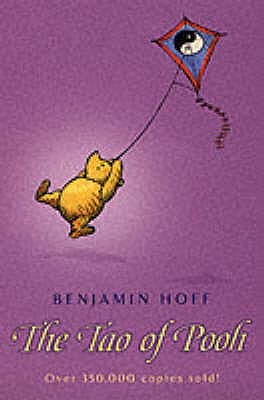
“The Tao of Pooh” is a book by Benjamin Hoff, first published in 1982. The book uses characters and stories from A. A. Milne’s “Winnie-the-Pooh” series to explain the principles of Taoism, a Chinese philosophy and religion.
The book introduces the reader to Taoism through the character of Winnie-the-Pooh, who embodies the Taoist philosophy of simplicity, naturalness, and humility. The author uses Pooh’s simple, uncomplicated approach to life to illustrate Taoist principles such as Wu Wei (non-action), the Uncarved Block (a symbol of naturalness and simplicity), and the Three Treasures (compassion, frugality, and humility).
The book also draws on other characters from the “Winnie-the-Pooh” series, such as Piglet, Eeyore, and Tigger, to illustrate different aspects of Taoist philosophy. For example, Piglet’s timidity represents the Taoist idea of the Small, while Eeyore’s pessimism represents the Taoist concept of the Negative.
Throughout the book, Hoff contrasts Pooh’s Taoist approach to life with the busy, goal-oriented approach of Western society. He argues that modern society has become too focused on material possessions, achievements, and goals, and has lost touch with the natural world and the simple pleasures of life.
Overall, “The Tao of Pooh” is a charming and accessible introduction to Taoism, using the beloved characters from the “Winnie-the-Pooh” series to convey complex philosophical concepts in an engaging and entertaining way.
The Greatest Salesman in the World by Og Mandino
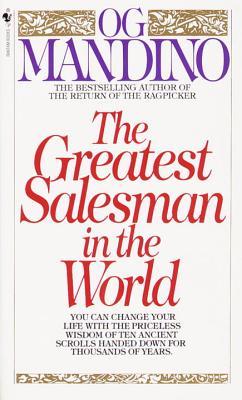
“The Greatest Salesman in the World” is a self-help book by Og Mandino, first published in 1968. The book is written as a parable and follows the story of Hafid, a poor camel boy who becomes the greatest salesman in the world through the guidance of a wise mentor named Pathros.
The book is divided into ten scrolls, each containing a principle or lesson that Hafid must master in order to become a successful salesman. These scrolls are designed to be read three times a day for thirty days, allowing the reader to internalize and apply the principles in their own life.
Each scroll contains a different lesson, such as “I will greet this day with love in my heart”, “I will persist until I succeed”, and “I will live this day as if it is my last”. These principles are intended to help the reader develop positive habits, build self-confidence, and improve their relationships with others.
Throughout the book, Hafid faces a number of challenges and setbacks, but through his dedication to the principles in the scrolls and the guidance of Pathros, he is able to overcome these obstacles and achieve great success as a salesman.
Today Matters by John C. Maxwell
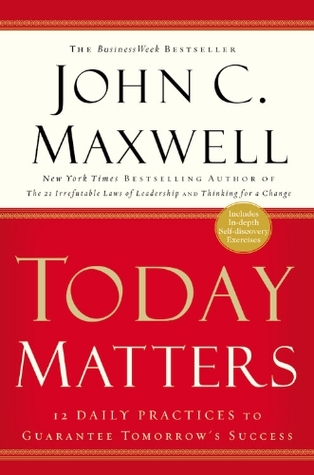
“Today Matters” is a self-help book by John C. Maxwell, first published in 2004. The book is designed to help readers make the most of each day and achieve their goals by focusing on the present moment and taking action today.
The book is divided into 12 chapters, each focusing on a different aspect of personal growth and development. These chapters cover topics such as attitude, priorities, health, relationships, and personal growth.
Maxwell emphasizes the importance of taking action in the present moment, rather than putting things off until tomorrow or waiting for the “perfect” time to start. He encourages readers to prioritize their goals and focus on the tasks that will help them achieve those goals, rather than getting bogged down in less important tasks or distractions.
The book also includes practical advice on how to develop positive habits and routines, such as setting daily goals, creating a morning routine, and practicing gratitude.
Throughout the book, Maxwell uses personal anecdotes and examples from his own life and career to illustrate his points and make the principles he is discussing more relatable to readers.
Overall, “Today Matters” is a practical and inspiring guide to personal growth and development, emphasizing the importance of taking action today and making the most of each day in order to achieve long-term success and fulfillment.
Living the 80/20 Way by Richard Koch
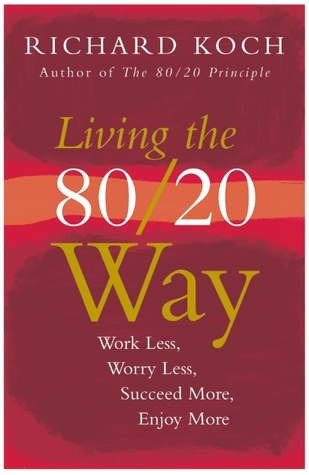
“Living the 80/20 Way” is a self-help book by Richard Koch, first published in 2004. The book is based on the principle of the Pareto Principle, also known as the 80/20 rule, which states that roughly 80% of results come from 20% of inputs.
The book is divided into three parts, each focusing on a different aspect of living the 80/20 way. The first part introduces the concept of the 80/20 rule and explains how it can be applied to various aspects of life, such as work, personal relationships, and health.
The second part of the book provides practical advice on how to apply the 80/20 rule in daily life, such as identifying the 20% of tasks or activities that will produce the most results and focusing on them, delegating tasks to others, and eliminating unnecessary tasks or activities.
The third and final part of the book explores the deeper philosophical and spiritual implications of the 80/20 rule, and how it can be used to live a more fulfilling and meaningful life. Koch encourages readers to focus on the things that truly matter to them, and to use the 80/20 rule as a tool for simplifying their lives and achieving their goals.
Throughout the book, Koch provides numerous examples and case studies to illustrate the power and effectiveness of the 80/20 rule. He also includes practical exercises and worksheets to help readers apply the principles in their own lives.
25 Ways to Win with People by John C. Maxwell
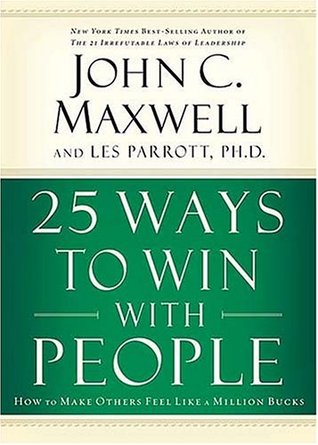
“25 Ways to Win with People” is a self-help book written by John C. Maxwell and co-authored by Les Parrott. The book focuses on practical strategies for building strong and positive relationships with others, whether in personal or professional contexts.
The book is divided into 25 short chapters, each presenting a different “way to win” with people. These include strategies such as:
- Start with yourself – cultivate a positive attitude and personal growth to improve your interactions with others.
- Find common ground – look for shared interests and experiences to build connections with others.
- Compliment freely – offer genuine and specific compliments to others to build their confidence and strengthen relationships.
- Listen attentively – show others that you value their thoughts and feelings by giving them your full attention when they speak.
- Keep your promises – follow through on commitments and build trust with others.
- Encourage others – offer support and affirmation to help others reach their full potential.
- Apologize quickly – take responsibility for mistakes and show empathy and sincerity when apologizing.
- Give credit generously – acknowledge the contributions of others and share credit for shared successes.
- Speak with kindness – use words that build up others and avoid criticism or negativity.
- Be patient – show understanding and compassion when others struggle or make mistakes.
The book emphasizes the importance of genuine connection, trust, and mutual respect in building strong relationships with others. It includes practical advice and real-life examples to illustrate each “way to win” and help readers apply the strategies in their own lives.
The 21 Irrefutable Laws of Leadership by John C. Maxwell
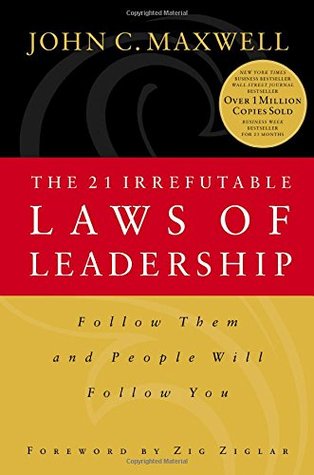
“The 21 Irrefutable Laws of Leadership” is a self-help book written by John C. Maxwell, a well-known leadership expert and speaker. The book presents 21 principles or “laws” of effective leadership that can be applied in any setting, whether in business, politics, or personal relationships.
The 21 laws of leadership are:
- The Law of the Lid – a leader’s effectiveness is limited by their own abilities and skills.
- The Law of Influence – leadership is about influence, not position or title.
- The Law of Process – effective leadership requires continuous learning and growth.
- The Law of Navigation – a leader must chart the course and guide others towards the goal.
- The Law of E.F. Hutton – when a leader speaks, people listen.
- The Law of Solid Ground – trust is the foundation of effective leadership.
- The Law of Respect – people follow leaders who they respect.
- The Law of Intuition – great leaders have a sense of intuition about people and situations.
- The Law of Magnetism – a leader’s charisma and character attract followers.
- The Law of Connection – effective leaders connect with people and build relationships.
- The Law of the Inner Circle – a leader’s success is influenced by the quality of their team.
- The Law of Empowerment – effective leaders empower and develop others.
- The Law of Reproduction – great leaders develop other great leaders.
- The Law of Buy-In – people support what they help create.
- The Law of Victory – effective leaders create a culture of winning.
- The Law of the Big Mo – momentum is key to achieving goals.
- The Law of Priorities – effective leaders focus on what matters most.
- The Law of Sacrifice – a leader must be willing to give up something in order to achieve something greater.
- The Law of Timing – effective leaders understand and respond to timing and opportunities.
- The Law of Explosive Growth – effective leaders create and manage growth.
- The Law of Legacy – a leader’s lasting impact is measured by the people they develop and the results they achieve.
Each law is explained in detail, with examples from historical and contemporary leaders to illustrate the principle. The book also includes practical exercises and reflection questions to help readers apply the laws in their own leadership journey.
Dr. Jekyll and Mr. Hyde by Robert Louis Stevenson

“Dr. Jekyll and Mr. Hyde” is a classic novel written by Robert Louis Stevenson and first published in 1886. The story follows the life of Dr. Henry Jekyll, a respected and well-known physician in Victorian-era London who is experimenting with the concept of separating the good and evil sides of human nature.
Jekyll creates a potion that allows him to transform into an entirely different person, whom he names Edward Hyde. Hyde is a smaller, younger, and more violent version of Jekyll, who goes on to commit several crimes in London. The more Jekyll transforms into Hyde, the more he loses control and becomes trapped in his own experiment. Jekyll soon realizes that he cannot control Hyde and that the potion is causing him to turn into Hyde involuntarily.
As Jekyll’s behavior becomes more erratic, his friends and colleagues become suspicious of his strange transformation. Eventually, Jekyll’s alter ego, Hyde, becomes uncontrollable and leads to a tragic ending for both Jekyll and Hyde.
The novel explores the theme of the duality of human nature and the consequences of trying to separate the good and evil within oneself. It also examines the societal pressures and expectations of Victorian-era London and the consequences of not conforming to them.
“Dr. Jekyll and Mr. Hyde” is a timeless classic that has inspired countless adaptations and interpretations in literature, film, and other forms of media. It remains a staple of the horror and suspense genres and continues to captivate audiences today.
The Story of My Life by Helen Keller

“The Story of My Life” is an autobiographical account by Helen Keller, an American author, political activist, and lecturer who was deafblind. The book was first published in 1903 when Keller was just 22 years old.
The book describes Keller’s life from childhood to her college years at Radcliffe College, where she graduated in 1904. Keller was born in 1880 in Tuscumbia, Alabama, and at the age of 19 months, she contracted an illness, which left her both deaf and blind.
Despite these challenges, Keller was determined to learn and communicate with the world around her. In her book, she recounts how her teacher, Anne Sullivan, helped her break through her isolation and learn to communicate through finger-spelling and sign language. She describes her early struggles with language and how she eventually mastered English, French, and German.
Keller also discusses her involvement in the women’s suffrage movement, her advocacy for people with disabilities, and her travels around the world, including a trip to Japan and a meeting with the Emperor.
“The Story of My Life” is a testament to Keller’s determination and resilience. It is an inspiring and moving account of her life that has captured the hearts of readers for over a century. It has been translated into more than 50 languages and has inspired numerous adaptations in film, theater, and other media.
A Study in Scarlet by Arthur Conan Doyle
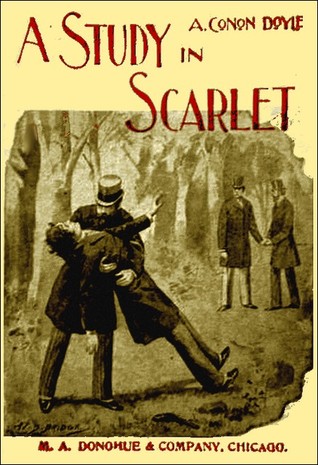
“A Study in Scarlet” is a novel by Sir Arthur Conan Doyle, first published in 1887. It is the first novel featuring Sherlock Holmes, the famous detective who became one of the most iconic characters in English literature.
The novel opens with Dr. John Watson returning to London after being injured while serving as an army surgeon in Afghanistan. He is introduced to Sherlock Holmes by a mutual acquaintance and soon moves in with him as his roommate. Holmes is already famous for his deductive abilities and unusual methods of investigation, and Watson is immediately fascinated by him.
The two are soon called upon to investigate a murder, which turns out to be connected to a mysterious American man named Jefferson Hope. The novel alternates between the story of the murder investigation and the backstory of Hope and his quest for revenge against those who wronged him.
As the investigation progresses, Holmes uses his remarkable powers of observation and deduction to piece together the clues and ultimately solve the case. The novel is notable for its complex plot, vivid characters, and for introducing the character of Sherlock Holmes to the world.
“A Study in Scarlet” is a classic of detective fiction and is still widely read and enjoyed today. It has been adapted for film, television, and other media many times, and remains one of the most popular and enduring works of its genre.
The Sign of Four by Arthur Conan Doyle
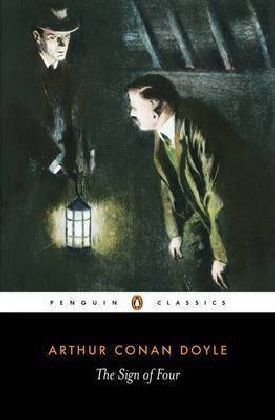
“The Sign of Four” is a novel by Sir Arthur Conan Doyle, first published in 1890. It is the second novel featuring Sherlock Holmes, the famous detective who became one of the most iconic characters in English literature.
The novel begins with a young woman named Mary Morstan visiting Holmes and Watson, seeking their help in solving a mystery. Mary’s father disappeared years ago, and she has recently received a mysterious letter from an anonymous sender, promising to reveal the truth about her father’s disappearance. The letter instructs her to meet the sender at a specific time and place, and she asks Holmes and Watson to accompany her.
The meeting takes a surprising turn when the sender, a man named Thaddeus Sholto, reveals that his father and Mary’s father were both involved in a mysterious treasure and that he fears for his own life. The group soon finds themselves drawn into a complex web of intrigue involving stolen treasure, secret codes, and dangerous criminals.
As Holmes and Watson work to unravel the mystery, they encounter a host of fascinating characters, including a one-legged man named Jonathan Small and his accomplice, Tonga, who become the prime suspects in the case. With the help of his remarkable powers of observation and deduction, Holmes eventually solves the case, uncovering the truth behind the mystery and bringing the criminals to justice.
“The Sign of Four” is a classic of detective fiction and is still widely read and enjoyed today. It is notable for its intricate plot, memorable characters, and vivid depiction of Victorian London. Like its predecessor, “A Study in Scarlet,” it has been adapted for film, television, and other media many times, and remains one of the most popular and enduring works of its genre.
The Adventures of Sherlock Holmes by Arthur Conan Doyle
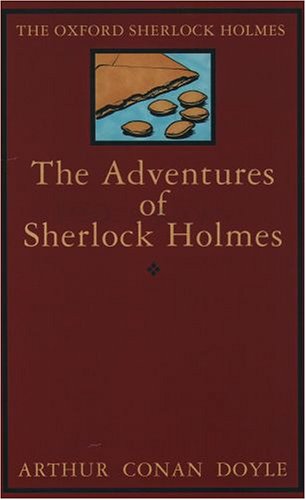
“The Adventures of Sherlock Holmes” is a collection of twelve short stories featuring the famous detective, Sherlock Holmes, and his friend and assistant, Dr. John Watson. The stories were first published in the Strand Magazine in 1891-1892 and later compiled into a book.
The stories cover a range of cases that Holmes and Watson encounter, from solving murders and thefts to unraveling complex conspiracies. Each story follows a similar pattern, with Holmes using his extraordinary powers of observation and deduction to solve the case, often leaving Watson and the readers in awe of his intelligence and insight.
Some of the most well-known stories in the collection include “A Scandal in Bohemia,” in which Holmes crosses paths with the cunning and beautiful Irene Adler; “The Red-Headed League,” in which a strange organization offers a large reward for an unusual job; and “The Speckled Band,” in which Holmes investigates the death of a young woman in her bedchamber.
Through these stories, Doyle created one of the most iconic characters in English literature and established the detective story as a popular genre. The character of Holmes and his methods of deduction continue to fascinate readers and inspire adaptations in various media to this day.
The Memoirs of Sherlock Holmes by Arthur Conan Doyle
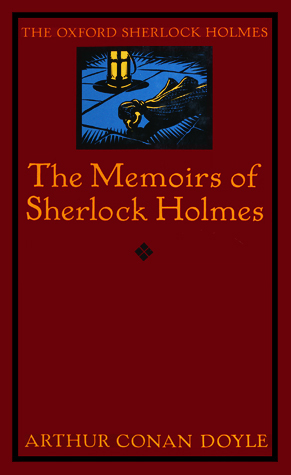
“The Memoirs of Sherlock Holmes” is a collection of short stories featuring the famous detective, Sherlock Holmes, and his assistant, Dr. John Watson. It was first published in 1894 and contains eleven stories, all narrated by Watson.
The stories in this collection cover a range of cases that Holmes and Watson encounter, from solving murders and thefts to unraveling complex conspiracies. Some of the most well-known stories in the collection include “The Adventure of the Final Problem,” in which Holmes faces off against his archenemy, Professor Moriarty, in a deadly struggle at the Reichenbach Falls; “The Adventure of the Yellow Face,” in which Holmes solves a case involving a man who has been concealing a secret from his wife; and “The Adventure of the Musgrave Ritual,” in which Holmes uncovers an ancient family mystery.
One of the most notable aspects of this collection is the inclusion of “The Adventure of the Cardboard Box,” a story that was controversial at the time of publication due to its graphic content. This story was later removed from British editions of the book and included instead in “His Last Bow.”
Overall, “The Memoirs of Sherlock Holmes” is a classic collection of stories that showcases Doyle’s skill in crafting engaging mysteries and memorable characters. The popularity of Sherlock Holmes and his world has continued to endure, with numerous adaptations and reinterpretations appearing in various media over the years.
The Time Machine by H.G. Wells
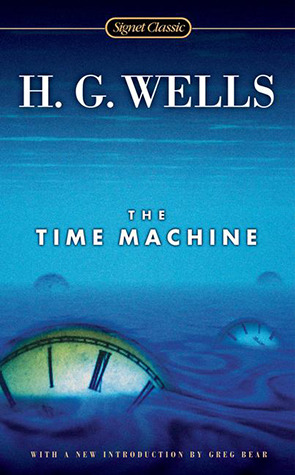
“The Time Machine” is a science fiction novel by H.G. Wells, first published in 1895. It tells the story of an unnamed time traveler who builds a machine that allows him to travel through time. The book explores the themes of social class, evolution, and the nature of humanity.
The novel begins with the time traveler showing his friends a miniature time machine that he has built. He claims that it can move through time in the same way that a ship can move through the ocean. Skeptical but intrigued, his friends come back a week later to find that the time traveler has disappeared. He reappears later that night, injured and disoriented, and proceeds to tell them of his incredible journey through time.
The time traveler describes his travels to the distant future, where he encounters two races: the Eloi and the Morlocks. The Eloi are childlike and weak, living in idleness and luxury on the surface of the Earth. The Morlocks, on the other hand, live underground and have evolved into a race of brutal, cannibalistic creatures who prey on the Eloi. The time traveler soon realizes that the two races represent the future of humanity, with the Eloi representing the upper class and the Morlocks representing the working class.
As the time traveler tries to understand and survive in this new world, he also grapples with the larger questions of the nature of humanity and the fate of civilization. The book ends with the time traveler disappearing again, leaving behind only his machine and a sense of wonder and mystery.
“The Time Machine” is a classic of science fiction, and has been adapted into numerous films, television shows, and other media over the years. Its themes of social commentary and speculation about the future have continued to resonate with readers over a century after its initial publication.
The Hound of the Baskervilles by Arthur Conan Doyle

“The Hound of the Baskervilles” is a novel by Arthur Conan Doyle, featuring detective Sherlock Holmes. The story is set in the early 20th century in the moors of Devon, England. The novel follows the investigation of the mysterious death of Sir Charles Baskerville, who was found dead in the moors with signs of a large hound’s attack.
Dr. James Mortimer, a friend of Sir Charles, asks for Holmes’ assistance in solving the case. Holmes sends his trusted friend and colleague Dr. John Watson to investigate the case on site. Watson discovers a strange legend involving a curse on the Baskerville family that dates back to the 17th century. The curse is said to involve a demonic hound that haunts the family and is responsible for the deaths of many of its members.
Watson discovers several suspicious characters, including the family’s butler, Barrymore, and his wife, who are hiding a secret. There is also a mysterious stranger on the moors who is believed to be the culprit.
As Watson delves deeper into the case, he begins to believe that the legend of the hound is real, and that the family is indeed cursed. He also becomes convinced that the stranger on the moors is not human, but is in fact the demonic hound.
Holmes eventually arrives on the scene and solves the case, revealing the true identity of the stranger and the motives behind the murder. The novel ends with the hound meeting its demise, and the curse on the Baskerville family being lifted.
The Universe in a Nutshell by Stephen Hawking
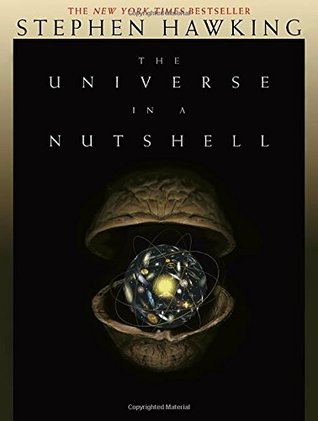
“The Universe in a Nutshell” is a popular science book by Stephen Hawking, published in 2001. It is a sequel to his earlier work, “A Brief History of Time”. In the book, Hawking provides an overview of the universe, its structure, and its history, using a combination of simple language and complex mathematical equations.
The book is divided into ten chapters, each focusing on a specific topic related to the universe. In the first chapter, Hawking describes the history of scientific progress, from the ancient Greeks to modern times. He then delves into the nature of space and time, discussing topics such as the theory of relativity and the concept of black holes.
In the subsequent chapters, Hawking explores topics such as the origin of the universe, the nature of quantum mechanics, the theory of cosmic strings, and the possibility of time travel. He also discusses the concept of multiple universes, and how they might be connected.
Throughout the book, Hawking explains complex scientific concepts in a clear and accessible way, using analogies and illustrations to help readers understand difficult ideas. He also provides his own insights and speculations, often challenging traditional scientific thinking.
“The Universe in a Nutshell” is a fascinating and thought-provoking book, and is accessible to readers with a basic understanding of science and mathematics. It provides a valuable overview of our current understanding of the universe and its workings, and invites readers to explore the mysteries of the cosmos.
Everything is F*cked: A Book About Hope by Mark Manson
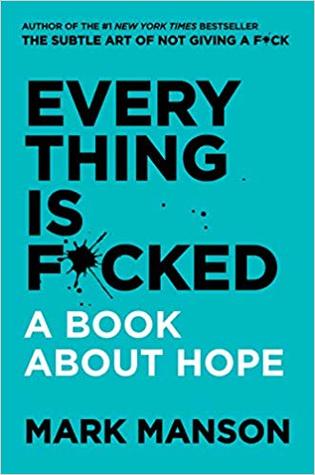
“Everything is F*cked: A Book About Hope” is a self-help book by Mark Manson, published in 2019. The book explores the challenges of living in a world that is increasingly complex and uncertain, and provides practical advice on how to find meaning and purpose in life.
The book is divided into two parts. In the first part, Manson argues that many of the problems we face as individuals and as a society are the result of a fundamental lack of trust. He explains how trust is essential for building healthy relationships and creating a sense of purpose in life, and explores the reasons why trust has become so difficult to achieve in modern society.
In the second part of the book, Manson provides practical advice on how to build trust and find meaning in life. He emphasizes the importance of accepting the inevitability of pain and suffering, and encourages readers to cultivate a sense of purpose by identifying and pursuing their core values.
Throughout the book, Manson uses humor and irreverence to engage readers, and provides a refreshing and honest perspective on the challenges of modern life. He draws on insights from psychology, philosophy, and history to provide a comprehensive and practical guide to finding hope and meaning in a world that can often seem overwhelming.
“Everything is F*cked” is a thought-provoking and inspiring book that offers a new perspective on the challenges of modern life. It is recommended for anyone looking to find meaning and purpose in a world that often seems to be falling apart.
The Return of Sherlock Holmes by Arthur Conan Doyle
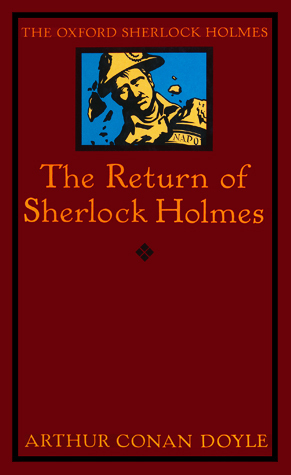
“The Return of Sherlock Holmes” is a collection of 13 short stories featuring the detective Sherlock Holmes, written by Arthur Conan Doyle and published in 1905. The stories take place after the events of “The Final Problem,” in which Holmes was believed to have died, and detail his return to his work as a private detective.
The stories include “The Adventure of the Empty House,” in which Holmes reveals how he survived his supposed death; “The Adventure of the Norwood Builder,” in which Holmes clears the name of a young lawyer accused of murder; and “The Adventure of the Dancing Men,” in which Holmes solves a cryptogram used to threaten a woman’s life.
The collection also features the story “The Adventure of the Six Napoleons,” in which Holmes investigates a series of seemingly random attacks on plaster busts of Napoleon Bonaparte, and “The Adventure of the Second Stain,” in which Holmes is called upon to retrieve a stolen letter that could compromise the British government.
A Valley of Fear by Arthur Conan Doyle
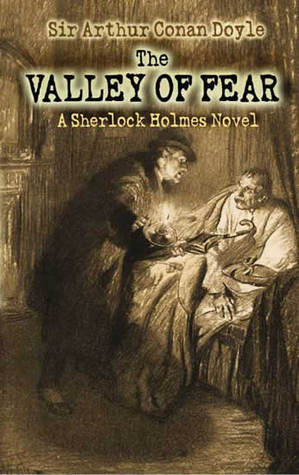
“A Valley of Fear” is a novel by Sir Arthur Conan Doyle, first published in 1915. The story is divided into two parts, with the first part taking place in England and the second part in the United States.
The novel begins with the murder of John Douglas, an American mining engineer, at his home in Sussex, England. Sherlock Holmes is called in to investigate the case, which leads him and his colleague, Dr. John Watson, on a trail that eventually takes them to a mining town in Pennsylvania.
The second part of the novel is a flashback, revealing the events leading up to the murder of John Douglas. The story follows the life of Jack McMurdo, a member of a secret society called the Scowrers, who operate in the coal-mining towns of the United States. When McMurdo falls in love with a woman named Ettie Shafter, he decides to leave the Scowrers and start a new life with her. However, the Scowrers soon find out about his plans and begin to pursue him.
The two parts of the novel come together in a dramatic conclusion as Holmes solves the mystery behind John Douglas’s murder and brings the Scowrers to justice. “A Valley of Fear” is considered one of Conan Doyle’s best works and is particularly notable for its exploration of the dark underbelly of American society in the early 20th century.
His Last Bow by Arthur Conan Doyle

“His Last Bow” is a collection of short stories featuring Sherlock Holmes, written by Arthur Conan Doyle and first published in 1917. The collection contains seven stories, with the title story being the final one, in which Holmes comes out of retirement to help the British government prevent a German spy from stealing British military secrets on the eve of World War I.
The other six stories in the collection are:
- The Adventure of Wisteria Lodge: In this story, Holmes investigates the mysterious deaths of two men at Wisteria Lodge, a remote house in Surrey.
- The Adventure of the Cardboard Box: A woman receives a strange package containing two human ears, and Holmes is called in to solve the mystery.
- The Adventure of the Red Circle: Holmes and Watson investigate the strange occurrences at the home of Mrs. Warren, a lady who has been receiving threatening letters.
- The Adventure of the Bruce-Partington Plans: The plans for a new submarine are stolen and Holmes must recover them before they fall into enemy hands.
- The Adventure of the Dying Detective: Holmes fakes a serious illness in order to lure a murderer out of hiding.
- The Disappearance of Lady Frances Carfax: Lady Frances disappears while travelling in Europe, and Holmes must find her before it’s too late.
“His Last Bow” is notable for being the last collection of Sherlock Holmes stories published by Conan Doyle, and for the finality of the title story, which suggests that it was meant to be the last Holmes adventure.
The Case Book of Sherlock Holmes by Arthur Conan Doyle
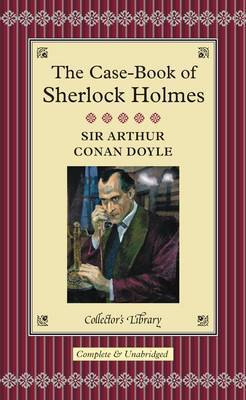
“The Case-Book of Sherlock Holmes” is a collection of twelve short stories featuring the famous detective Sherlock Holmes, written by Arthur Conan Doyle. The stories were originally published in various magazines between 1921 and 1927.
The first story, “The Illustrious Client,” involves a young woman who seeks Holmes’ help in preventing her marriage to a wealthy and dangerous man. In “The Blanched Soldier,” Holmes receives a visit from an old friend who is in trouble. “The Mazarin Stone” sees Holmes tracking down a stolen diamond, while “The Three Gables” involves a woman who fears for her life.
Other stories in the collection include “The Sussex Vampire,” “The Three Garridebs,” “The Creeping Man,” “The Lion’s Mane,” “The Veiled Lodger,” “Shoscombe Old Place,” “The Retired Colourman,” and “The Dying Detective.”
In each of these stories, Holmes uses his extraordinary powers of observation and deduction to solve complex mysteries and bring criminals to justice. The stories also feature his loyal friend and assistant, Dr. John Watson, who narrates many of the tales.
Overall, “The Case-Book of Sherlock Holmes” is a thrilling and satisfying read for fans of the detective genre and those who enjoy well-crafted stories with intriguing plots and memorable characters.
Tao Te Ching by Lao Tzu
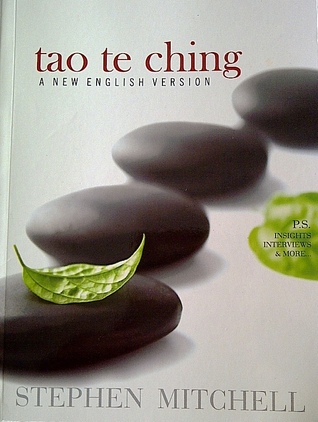
Tao Te Ching is an ancient Chinese philosophical text attributed to Lao Tzu, a legendary figure who is believed to have lived in the 6th century BCE. The text is divided into 81 chapters, each of which contains a series of poetic verses that explore various aspects of Taoist philosophy.
At its core, Tao Te Ching is a meditation on the nature of existence and the principles that govern the universe. The text emphasizes the importance of living in harmony with nature and cultivating a sense of inner stillness and detachment in order to achieve enlightenment. It also offers practical advice on how to live a virtuous life, including the virtues of humility, simplicity, and compassion.
One of the key themes of Tao Te Ching is the concept of Tao, which is often translated as “the way” or “the path.” Tao is the underlying principle that governs the universe and everything in it, and the text encourages readers to align themselves with this natural order in order to achieve a state of inner peace and enlightenment.
Tao Te Ching is also notable for its emphasis on the power of emptiness and non-action. The text suggests that by embracing a state of emptiness and letting go of our attachment to desires and material possessions, we can achieve a higher level of consciousness and live a more meaningful life.
Overall, Tao Te Ching is a deeply spiritual and philosophical text that continues to be studied and appreciated by readers around the world. Its timeless wisdom has inspired generations of thinkers, artists, and spiritual seekers, and its message of harmony, balance, and inner peace remains as relevant today as it was over two thousand years ago.
Superfans by Pat Flynn
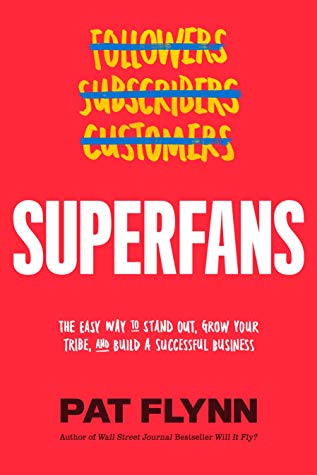
Superfans is a book by Pat Flynn that explores how to turn customers into fans who are enthusiastic about a brand or product. The book is divided into three parts:
Part one discusses what superfans are and why they are important for business success. It explains the difference between customers, subscribers, and superfans and shows how superfans can be a valuable asset to a business.
Part two covers the four stages of building a superfans community: discovery, participation, engagement, and sharing. The author describes how to move customers through each stage and how to create a community where superfans can connect with each other and with the brand.
Part three discusses how to maintain and grow a superfans community over time. It includes strategies for engaging with superfans, dealing with negative feedback, and providing ongoing value to the community.
Throughout the book, the author shares personal stories and examples of successful superfans communities. He also provides practical tips and action steps for implementing the strategies discussed. The goal of the book is to help businesses build a community of superfans who will be loyal customers and advocates for the brand.
Julius Caesar by William Shakespeare

“Julius Caesar” is a play by William Shakespeare that tells the story of the assassination of the Roman dictator, Julius Caesar, and the aftermath of his death. The play is set in ancient Rome and begins with Caesar’s return to the city after his victory in the civil war. However, his growing power and ambition threaten the stability of the Roman Republic, and a group of conspirators, including Brutus and Cassius, plot to assassinate him.
Despite warnings from a soothsayer and his wife Calpurnia’s dreams, Caesar is eventually assassinated in the Senate. This leads to a power struggle between the conspirators, led by Brutus and Cassius, and Caesar’s loyal supporters, led by Mark Antony. The play explores themes of power, ambition, loyalty, and betrayal, as well as the consequences of political violence and the question of what makes a good leader.
The play is famous for its powerful speeches, including Antony’s funeral oration, which begins with the famous line “Friends, Romans, countrymen, lend me your ears,” and Brutus’s soliloquy, in which he justifies his involvement in the conspiracy. “Julius Caesar” has been adapted and interpreted in many different ways over the years, and is considered one of Shakespeare’s most enduring and influential works.
I read portions of this play as part of my English language curriculum. Merchant of Venice and Julius Caesar were my introductions to the works of William Shakespeare. I wanted to read the complete play.
Sonnets by William Shakespeare

William Shakespeare’s Sonnets is a collection of 154 poems that focus on various themes such as love, beauty, time, and mortality. The sonnets were first published in 1609, and they are written in iambic pentameter with a rhyme scheme of ABAB CDCD EFEF GG.
The first 126 sonnets are addressed to a young man, while the remaining 28 are addressed to a dark lady. Many of the sonnets explore the speaker’s romantic and sexual desires and frustrations, while others delve into more philosophical themes.
The most famous of the sonnets is probably Sonnet 18, which begins “Shall I compare thee to a summer’s day?” and goes on to describe the beauty of the speaker’s beloved. Other well-known sonnets include Sonnet 29 (“When in disgrace with fortune and men’s eyes”), Sonnet 73 (“That time of year thou mayst in me behold”), and Sonnet 116 (“Let me not to the marriage of true minds”).
Overall, Shakespeare’s Sonnets are a masterful exploration of human emotions and relationships, and they continue to be widely read and studied today.
The Merchant of Venice by William Shakespeare

“The Merchant of Venice” is a play by William Shakespeare, believed to have been written between 1596 and 1598. The play is set in Venice and tells the story of Bassanio, a young Venetian nobleman who is in love with the wealthy and beautiful Portia. In order to win Portia’s hand in marriage, Bassanio needs money to fund his pursuit, and turns to his friend Antonio, a successful merchant, for a loan. However, Antonio’s money is tied up in his ships at sea, so he borrows from a Jewish moneylender named Shylock.
Shylock harbors a deep-seated hatred for Antonio, who has publicly insulted and spat upon him for his Jewish faith, and demands a pound of Antonio’s flesh as collateral for the loan. Despite the risks, Antonio agrees to the terms, confident that his ships will soon return with enough money to repay the loan.
Meanwhile, Portia’s father has stipulated in his will that any suitor who wishes to marry her must choose the correct casket from among three, one made of gold, one of silver, and one of lead. Bassanio chooses the lead casket, which contains Portia’s picture and a note promising her hand in marriage.
As the day of repayment to Shylock approaches, Portia disguises herself as a male lawyer and goes to Venice to defend Antonio in court. Through a series of legal arguments, she ultimately secures Antonio’s release and humiliates Shylock, who is forced to convert to Christianity and surrender his wealth.
The play explores themes of prejudice, revenge, justice, mercy, and the nature of love.
The Secret by Rhonda Byrne
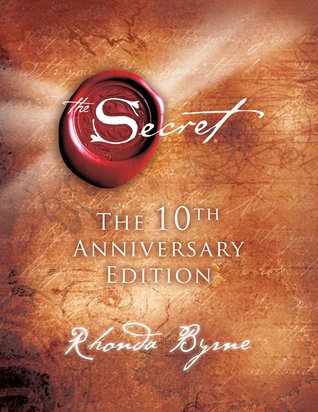
“The Secret” by Rhonda Byrne is a self-help book that explores the law of attraction and how it can be used to achieve success, happiness, and fulfillment in life. The book is based on the concept that thoughts and beliefs have a powerful influence on a person’s life and that by focusing on positive thoughts and desires, individuals can attract positive outcomes and opportunities into their lives.
The author presents the law of attraction as a universal principle that works like a magnet, attracting people, events, and circumstances that are in alignment with a person’s thoughts and beliefs. She suggests that individuals can use this law to their advantage by visualizing their desires, affirming positive beliefs, and taking inspired action towards their goals.
The book is divided into several sections that explain different aspects of the law of attraction, such as gratitude, visualization, and positive thinking. The author also provides examples of people who have successfully used the law of attraction to achieve their goals, including celebrities and business leaders.
Overall, “The Secret” presents a positive and optimistic message that encourages readers to take control of their thoughts and beliefs in order to create a more fulfilling and successful life. However, some critics have argued that the book oversimplifies complex issues and ignores the role of hard work and determination in achieving success.
The Toyota Way by Jeffery K. Liker
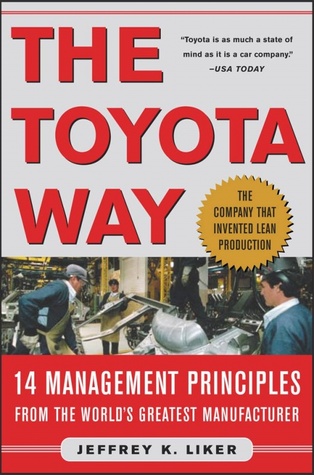
“The Toyota Way” is a book by Jeffery K. Liker that outlines the principles and practices that have made Toyota one of the most successful and innovative companies in the world. The book is based on extensive research into the company’s culture, management practices, and production methods.
Liker identifies fourteen principles that he believes are the key to Toyota’s success, including:
- Long-term thinking: Toyota takes a long-term approach to planning and decision-making, focusing on sustainable growth rather than short-term profits.
- Continuous improvement: Toyota is committed to continually improving its products, processes, and systems.
- Respect for people: Toyota values its employees and treats them with respect, recognizing their contributions and providing opportunities for growth and development.
- Standardized work: Toyota uses standardized work processes to ensure consistent quality and reduce waste.
- Kaizen: This is a Japanese term that means “continuous improvement.” Toyota encourages all employees to look for ways to improve processes and eliminate waste.
- Genchi Genbutsu: This is another Japanese term that means “go and see for yourself.” Toyota believes in firsthand observation and investigation to truly understand problems and find solutions.
- Jidoka: This is a term that means “automation with a human touch.” Toyota’s production processes are designed to detect problems and stop the production line if necessary, allowing for quick resolution of issues.
- Just-in-time: Toyota’s production system is based on a “pull” system, where production is based on customer demand rather than pushing products onto the market.
- Heijunka: This is a term that means “leveling.” Toyota uses this approach to smooth out production volumes and reduce waste.
- Andon: Toyota uses an “andon” system to alert workers to problems on the production line, allowing them to quickly address issues.
- Poka-yoke: This is a term that means “mistake-proofing.” Toyota uses this approach to design processes and products that are less likely to result in errors.
- Hoshin kanri: This is a term that means “policy deployment.” Toyota uses this approach to align goals and objectives throughout the company and ensure everyone is working toward the same vision.
- Nemawashi: This is a Japanese term that means “preparing the ground.” Toyota uses this approach to build consensus and support for new ideas and initiatives.
- Gemba: This is a term that means “the actual place.” Toyota believes in going to the source of a problem to truly understand it and find solutions.
Overall, “The Toyota Way” is a comprehensive guide to Toyota’s management philosophy and production methods, offering insights and lessons that can be applied to businesses in any industry.
Permission Marketing by Seth Godin
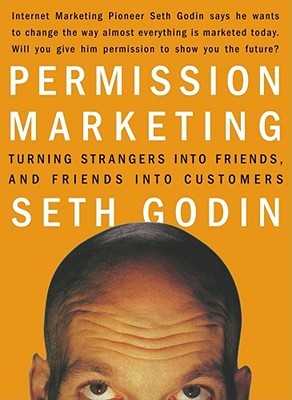
Permission Marketing is a book by Seth Godin that outlines a marketing strategy that involves obtaining permission from prospective customers before attempting to sell to them. The book argues that traditional interruption marketing, such as TV ads and direct mail, is becoming less effective because consumers are becoming more adept at tuning out advertising messages.
Godin argues that permission marketing is a more effective approach because it is based on building a relationship with the customer. By obtaining permission to market to the customer, the marketer can tailor their messaging to the customer’s needs and interests, increasing the chances that the customer will be receptive to the message.
The book outlines the key principles of permission marketing, including the importance of targeting the right audience, offering something of value in exchange for permission, and creating a system for managing the permission. It also includes case studies of successful permission marketing campaigns.
Overall, Permission Marketing argues that in a crowded and noisy marketplace, the most effective way to reach customers is to first earn their permission to market to them.
Tribes by Seth Godin
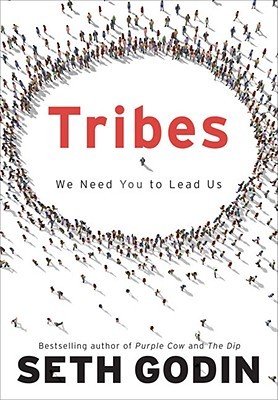
Tribes: We Need You to Lead Us is a book by Seth Godin published in 2008. The book discusses the role of leadership and the importance of creating and leading tribes, which are groups of people united by a common goal or interest.
Godin argues that in today’s interconnected world, it is easier than ever before to find and connect with like-minded individuals. He suggests that in order to create meaningful change, it is important to identify and lead tribes. According to Godin, a tribe needs a leader who can provide direction, inspire and empower members, and facilitate the creation of a community.
The book also discusses the changing nature of work and the importance of finding meaning and purpose in what we do. Godin suggests that traditional hierarchies are becoming obsolete and that people are increasingly seeking out work that is meaningful and fulfilling. He argues that by identifying and leading a tribe, individuals can find greater fulfillment in their work and create positive change in the world.
Throughout the book, Godin provides examples of successful tribes, including Apple’s devoted fan base, Harley Davidson’s community of riders, and the political campaigns of Barack Obama. He also provides practical advice for identifying and leading a tribe, including how to communicate effectively, build trust and loyalty, and leverage technology and social media.
The Road to Recognition by Seth Price, Barry Feldman
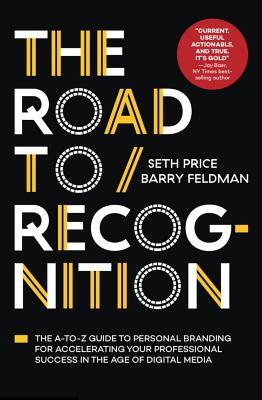
“The Road to Recognition” by Seth Price and Barry Feldman is a guide for individuals and businesses who want to build their personal and corporate brands. The book outlines a step-by-step process for creating a unique brand, developing a strategy for building recognition, and leveraging digital and social media to reach an audience.
The authors emphasize the importance of understanding and articulating one’s unique value proposition, identifying a target audience, and developing a content strategy that is aligned with the brand’s goals and values. They also provide tips for creating compelling visual and written content, building a website that is optimized for search engines and user experience, and engaging with the community on social media.
Throughout the book, the authors provide real-world examples of individuals and businesses that have successfully built their brands and gained recognition in their respective fields. They also provide worksheets and exercises to help readers apply the concepts and strategies outlined in the book to their own personal or corporate brand.
Extreme Ownership by Jocko Wilinck, Leif Babin

Extreme Ownership: How U.S. Navy SEALs Lead and Win is a leadership and management book by former U.S. Navy SEALs Jocko Willink and Leif Babin. The book discusses the principles and strategies that the authors used during their military careers and how they can be applied to leadership and management in any organization.
The central theme of the book is extreme ownership, which means taking full responsibility for everything that happens in an organization, even when things go wrong. The authors argue that leaders who take extreme ownership can create a culture of accountability and excellence that leads to success.
The book is divided into three sections. The first section explains the concept of extreme ownership and how it applies to leadership. The authors use examples from their time in the military to demonstrate the importance of taking ownership and accountability for everything that happens within a team.
The second section focuses on the importance of building a strong team. The authors discuss the importance of clear communication, mutual trust, and shared goals in creating a high-performing team. They also provide examples of how these principles can be applied to business organizations.
The final section of the book focuses on the importance of planning and execution. The authors emphasize the need for leaders to create a clear mission, develop a detailed plan, and execute that plan with discipline and focus. They also provide examples of how these principles can be applied in both military and business settings.
Overall, the book provides practical advice for leaders and managers who want to build high-performing teams and achieve success in their organizations. The authors’ experiences as Navy SEALs provide a unique perspective on leadership that is both inspiring and informative.
Against the Gods by Peter L. Bernstein
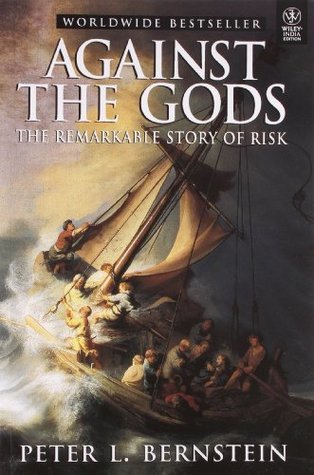
“Against the Gods: The Remarkable Story of Risk” by Peter L. Bernstein is a non-fiction book that explores the history of risk and the role it has played in the development of human civilization. The author argues that risk is what separates human beings from animals, and that the ability to manage risk has been the driving force behind many of the great advances in science, technology, and culture.
The book is divided into five parts. The first part covers the ancient world, and discusses the origins of risk and probability in ancient societies. The second part covers the medieval period, and explores the rise of mathematics and its relationship to risk management. The third part covers the early modern period, and looks at the development of capitalism and the role of risk in the rise of the modern economy. The fourth part covers the modern era, and discusses the development of new technologies and financial instruments for managing risk. The fifth and final part looks to the future, and considers the challenges and opportunities that lie ahead for risk management in the 21st century.
Throughout the book, Bernstein uses a wide range of examples to illustrate his points, including everything from the development of insurance and the stock market to the role of risk in scientific discovery and artistic innovation. He also draws on insights from many different fields, including economics, psychology, and philosophy.
Overall, “Against the Gods” is a thought-provoking and insightful book that offers a fascinating perspective on the role of risk in human history and society. Whether you’re interested in economics, history, or simply the human experience, this book is sure to provide a compelling read.
Man’s Search for Meaning by Viktor E. Frankl
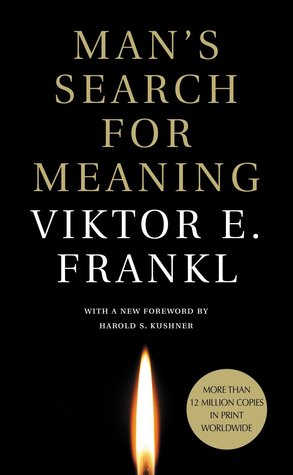
“Man’s Search for Meaning” is a book by Viktor E. Frankl, which is based on his experiences as a prisoner in Nazi concentration camps during World War II. The book is divided into two parts: the first part is Frankl’s account of his experiences in the concentration camps, while the second part is his theory of logotherapy, which focuses on finding meaning in life.
In the first part, Frankl recounts the horrors he and his fellow prisoners faced in the concentration camps, including starvation, disease, and brutal treatment by the guards. He describes the daily struggle for survival, as well as the psychological toll that the experience took on him and his fellow prisoners.
In the second part, Frankl explains his theory of logotherapy, which is based on the idea that humans are motivated by the search for meaning in life. He argues that even in the most difficult and tragic circumstances, people can find meaning in their lives by choosing to respond to their circumstances with courage, dignity, and a sense of purpose.
Throughout the book, Frankl emphasizes the importance of personal responsibility and the power of the human spirit to overcome adversity. He also provides insights into the psychological and philosophical dimensions of human experience, making “Man’s Search for Meaning” a thought-provoking and inspiring read.
Deep Work by Cal Newport
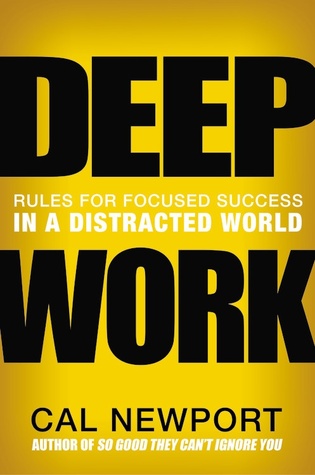
“Deep Work” by Cal Newport is a book that explores the concept of working in a state of deep concentration that enables individuals to focus on cognitively demanding tasks and produce high-quality output. The book argues that in today’s world of constant distractions and interruptions, the ability to do deep work has become a valuable skill and a competitive advantage for knowledge workers.
Newport provides a framework for developing the ability to do deep work, including techniques for minimizing distractions, structuring work schedules, and cultivating the mental habits necessary for sustained concentration. He also provides examples of individuals who have successfully implemented these practices to achieve exceptional results in their work and personal lives.
Overall, the book encourages readers to rethink their approach to work and to prioritize deep work as a means of achieving professional success and personal fulfillment.
Hooked by Nir Eyal
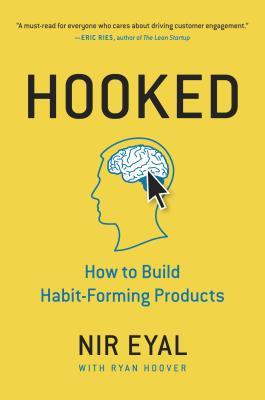
“Hooked: How to Build Habit-Forming Products” by Nir Eyal is a book that explains how companies can create products that users will form habits around, leading to increased engagement and loyalty. The book outlines a four-step process, known as the “Hook Model,” that companies can use to create products that are habit-forming:
- Trigger: The first step is to create a trigger that prompts the user to take action. There are two types of triggers: external and internal. External triggers are cues in the user’s environment, such as notifications or advertisements, that prompt the user to take action. Internal triggers are cues within the user’s mind, such as a feeling of boredom or anxiety, that prompt the user to take action.
- Action: The second step is to make the action as easy as possible to take. The easier the action, the more likely the user will take it.
- Variable Reward: The third step is to provide a variable reward that keeps the user engaged. Variable rewards are unpredictable and can take many forms, such as social validation, a sense of accomplishment, or a feeling of progress.
- Investment: The final step is to encourage the user to invest in the product. The more the user invests in the product, the more likely they are to continue using it.
The book also discusses the ethical implications of creating habit-forming products and provides guidance on how to create products that are both effective and ethical. Overall, “Hooked” is a valuable resource for anyone interested in product design, marketing, or psychology.
Purple Cow by Seth Godin

Purple Cow is a marketing book written by Seth Godin, first published in 2003. The book emphasizes the need for businesses to be remarkable and to stand out from their competitors in order to be successful. The “purple cow” metaphor refers to a cow that is painted purple, which would certainly catch people’s attention and be talked about.
Godin argues that traditional marketing techniques such as advertising and public relations are no longer effective in today’s cluttered and oversaturated marketplace. Instead, he advocates for creating products and services that are truly remarkable and that people will talk about and share with others. This requires taking risks and being willing to do things differently.
The book is organized into short, easy-to-read chapters that offer practical advice and examples of businesses that have successfully implemented the purple cow philosophy. Godin also emphasizes the importance of constantly innovating and improving, as what is remarkable today may become commonplace tomorrow.
Overall, the message of Purple Cow is that businesses must be willing to take risks and stand out in order to succeed in today’s marketplace.
Free Prize Inside by Seth Godin

“Free Prize Inside” is a book written by Seth Godin, published in 2004. The book is a follow-up to Godin’s previous book “Purple Cow” and explores ways that businesses can innovate and differentiate themselves in crowded markets.
The central concept of the book is the “free prize inside” – a surprise and delight feature of a product or service that goes beyond its core function and generates buzz, customer loyalty, and word-of-mouth marketing. Godin argues that a free prize inside can turn a boring, average product into something remarkable and create a competitive advantage.
Throughout the book, Godin provides numerous examples of companies that have successfully implemented the free prize inside strategy, such as the Cracker Jack snack brand’s inclusion of a toy surprise in every box. He also shares practical advice and exercises for identifying and creating a free prize inside for your own business.
Overall, “Free Prize Inside” encourages businesses to think outside the box and to focus on creating something truly remarkable that stands out in the market.
Linchpin by Seth Godin

“Linchpin” is a book written by Seth Godin, published in 2010. The book is about the changing nature of work and how to become a “linchpin,” which is someone who is indispensable to an organization, regardless of their job title or position. Godin argues that in today’s world of work, where there is an abundance of interchangeable workers, it’s essential to be a linchpin to thrive and succeed.
Godin identifies the characteristics of a linchpin, such as being creative, empathetic, and taking initiative. He also suggests ways to develop these traits and become a linchpin, such as overcoming resistance to change, embracing your passion, and creating art in your work.
The book also explores the idea of “emotional labor” and how linchpins use it to create connections with others and drive change. Godin emphasizes the importance of bringing your whole self to work and being willing to take risks and make mistakes.
The Hero by Rhonda Byrne
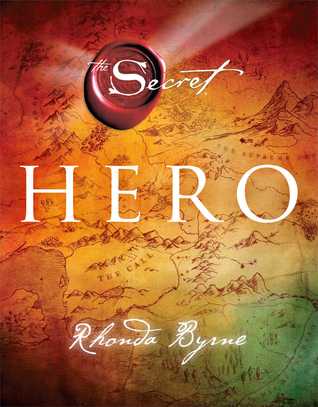
“The Hero” is a self-help book written by Rhonda Byrne and published in 2013. It follows a similar format to Byrne’s previous book, “The Secret,” and aims to inspire readers to discover their own potential and become the heroes of their own lives.
The book is divided into two parts. The first part focuses on the idea of the hero’s journey, which is a common narrative structure in many stories and myths. Byrne explains that everyone has the potential to be a hero in their own life, and outlines the different stages of the hero’s journey, including the call to adventure, the challenges faced along the way, and the ultimate transformation.
The second part of the book contains a series of practical exercises and tools to help readers apply the principles of the hero’s journey to their own lives. These include gratitude practices, visualization exercises, and strategies for overcoming obstacles and setbacks.
Throughout the book, Byrne emphasizes the power of positive thinking and the importance of taking responsibility for one’s own life. She also stresses the idea that everyone has unique gifts and talents that can be used to make a positive impact on the world.
The Slight Edge by Jeff Olson
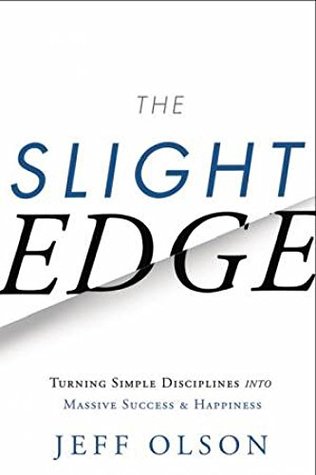
“The Slight Edge” is a self-help book by Jeff Olson that emphasizes the importance of small daily choices and habits in creating long-term success. The book argues that these small, seemingly insignificant choices can compound over time, leading to either success or failure.
Some key concepts from the book include:
- The slight edge: The idea that success comes from consistently making small, positive choices over time.
- The power of habits: The book emphasizes the importance of creating positive daily habits that can lead to success.
- Taking responsibility: The book encourages readers to take ownership of their lives and the choices they make.
- Persistence and perseverance: The book emphasizes the importance of never giving up, even in the face of challenges and setbacks.
- Goal setting: The book emphasizes the importance of setting clear, achievable goals and consistently working towards them.
Overall, “The Slight Edge” is a motivational book that encourages readers to make positive changes in their lives by focusing on small, daily actions. It emphasizes the idea that success is not the result of one big breakthrough, but rather the result of consistent, persistent effort over time.
This is one of the OG self-help books written on the subjects of self-development and self-improvement. It is my number one book recommendation to anyone looking for books in its genre.
The Millionaire Booklet by Grant Cordone
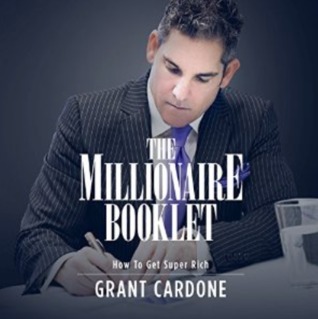
“The Millionaire Booklet” is a short book written by American entrepreneur and sales expert Grant Cardone. It is a concise guidebook that provides practical advice and strategies for achieving financial success and becoming a millionaire. The book is based on the author’s personal experiences and observations, as well as interviews with successful millionaires.
The main premise of the book is that becoming a millionaire is not only possible, but it is also achievable for anyone who is willing to work hard, be disciplined, and follow a proven plan. The book emphasizes the importance of taking action and making smart decisions, rather than just dreaming about success.
The book is divided into ten chapters, each of which focuses on a different aspect of wealth creation. These include the importance of setting clear goals, taking consistent action, developing a strong work ethic, and learning from failure. The book also provides specific tips and strategies for building wealth, such as investing in real estate, starting a business, and developing multiple streams of income.
Throughout the book, the author emphasizes the importance of mindset and attitude in achieving financial success. He encourages readers to adopt a positive mindset, develop a sense of urgency, and maintain a strong sense of motivation and determination.
Overall, “The Millionaire Booklet” is a practical and inspiring guide to achieving financial success. It provides valuable insights and strategies for anyone who wants to improve their financial situation and build wealth.
The Power by Rhonda Byrne
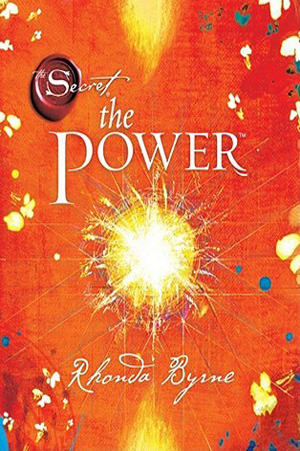
“The Power” is a self-help book written by Rhonda Byrne and published in 2010. It is a follow-up to her previous book “The Secret” and focuses on the power of positive thinking and visualization. The book teaches readers how to harness the power of their thoughts and emotions to create positive change in their lives.
The main theme of the book is the Law of Attraction, which states that thoughts and emotions have a powerful influence on one’s life. The book encourages readers to focus on positive thoughts and emotions, and to avoid negative thoughts and feelings, in order to attract positive experiences into their lives.
“The Power” is divided into several sections, each of which focuses on a different aspect of positive thinking and visualization. These include gratitude, relationships, health, and money, among others. Each section includes practical exercises and techniques that readers can use to improve their lives.
Overall, the book is designed to help readers cultivate a positive mindset and outlook on life, and to use that positivity to achieve their goals and dreams.
Zen Mind, Beginner’s Mind by Shunryu Suzuki
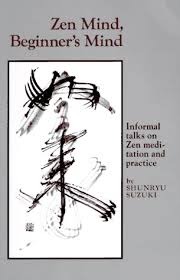
“Zen Mind, Beginner’s Mind” is a book by Shunryu Suzuki, a Japanese Zen master who founded the San Francisco Zen Center. The book is a collection of his teachings, recorded and transcribed by his students.
The main theme of the book is the concept of “beginner’s mind,” which is the idea of approaching life with a sense of curiosity, openness, and humility. Suzuki emphasizes the importance of this mindset in Zen practice, as it allows one to let go of preconceived notions and judgments, and to experience things as they are in the present moment.
The book also covers various topics such as zazen (sitting meditation), mindfulness, the nature of reality, and the role of the teacher in Zen practice. Suzuki emphasizes the need to approach these topics with a sense of openness and curiosity, rather than seeking intellectual understanding or trying to fit them into preconceived notions.
Overall, “Zen Mind, Beginner’s Mind” is a classic book on Zen Buddhism that offers insights and guidance for both beginners and experienced practitioners.
#AskGaryVee by Gary Vaynerchuk
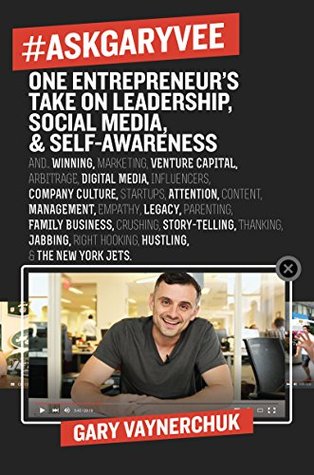
#AskGaryVee is a book written by entrepreneur and digital marketing expert Gary Vaynerchuk. The book is based on his popular video series by the same name, in which he answers questions from his followers and fans about business, marketing, entrepreneurship, and social media.
In the book, Vaynerchuk answers a wide range of questions on various topics related to business, marketing, and entrepreneurship. Some of the main topics covered in the book include:
- Social media marketing
- Personal branding
- Content marketing
- Business development
- Customer service
- Leadership
- Entrepreneurship
Throughout the book, Vaynerchuk provides practical advice and insights based on his experience as a successful entrepreneur and marketer. He encourages readers to be authentic, creative, and innovative in their approach to business and marketing, and to focus on building strong relationships with their customers and followers.
Digital Minimalism by Cal Newport
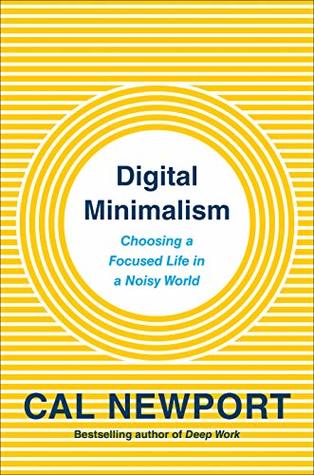
Digital Minimalism is a book by Cal Newport that examines the impact of digital technology on our lives and offers practical strategies for reducing our dependence on these tools in order to cultivate a more meaningful and fulfilling life.
The book argues that our constant use of digital devices and apps has led to a state of constant distraction and information overload, which is detrimental to our well-being and productivity. It advocates for a more intentional and mindful approach to using digital technology, where we only use the tools that add value to our lives and minimize the time we spend on them.
Some of the key ideas and strategies discussed in the book include:
- The importance of defining our values and priorities before deciding which digital tools to use and how to use them.
- The concept of a “digital declutter,” which involves taking a break from all non-essential digital technology for a period of time in order to reset our habits and priorities.
- The benefits of replacing digital activities with more meaningful and fulfilling activities, such as spending time with loved ones, pursuing hobbies, or engaging in physical activity.
- The importance of setting boundaries and establishing rules around our use of digital technology, such as avoiding devices before bedtime or during meals.
- The idea of using digital technology in a more intentional and focused manner, such as scheduling specific times for checking email or social media, rather than constantly switching between tasks and notifications.
- The need to build a supportive community of people who share our values and can help us stay accountable to our goals.
Overall, the book presents a compelling case for rethinking our relationship with digital technology and offers practical strategies for living a more intentional and fulfilling life in the digital age.
There you have it. That’s all the books I read in 2019. I achieved my target of reading one book a week in July so I continued reading more books. There are so many things I learned from each book.
I can’t believe I read these many books. There are many books that I would read again for sure and many which will go on “The Bookshelf”. I discovered many gems that I will revisit when I need a refresher. I am super excited about reading more in 2020.
So, which of the books have you read already? Which books did you add to your reading list? Let me know in the comments below. I will be back next time with the 2020 Reading Recap.
(Originally written and published in January 2020)

